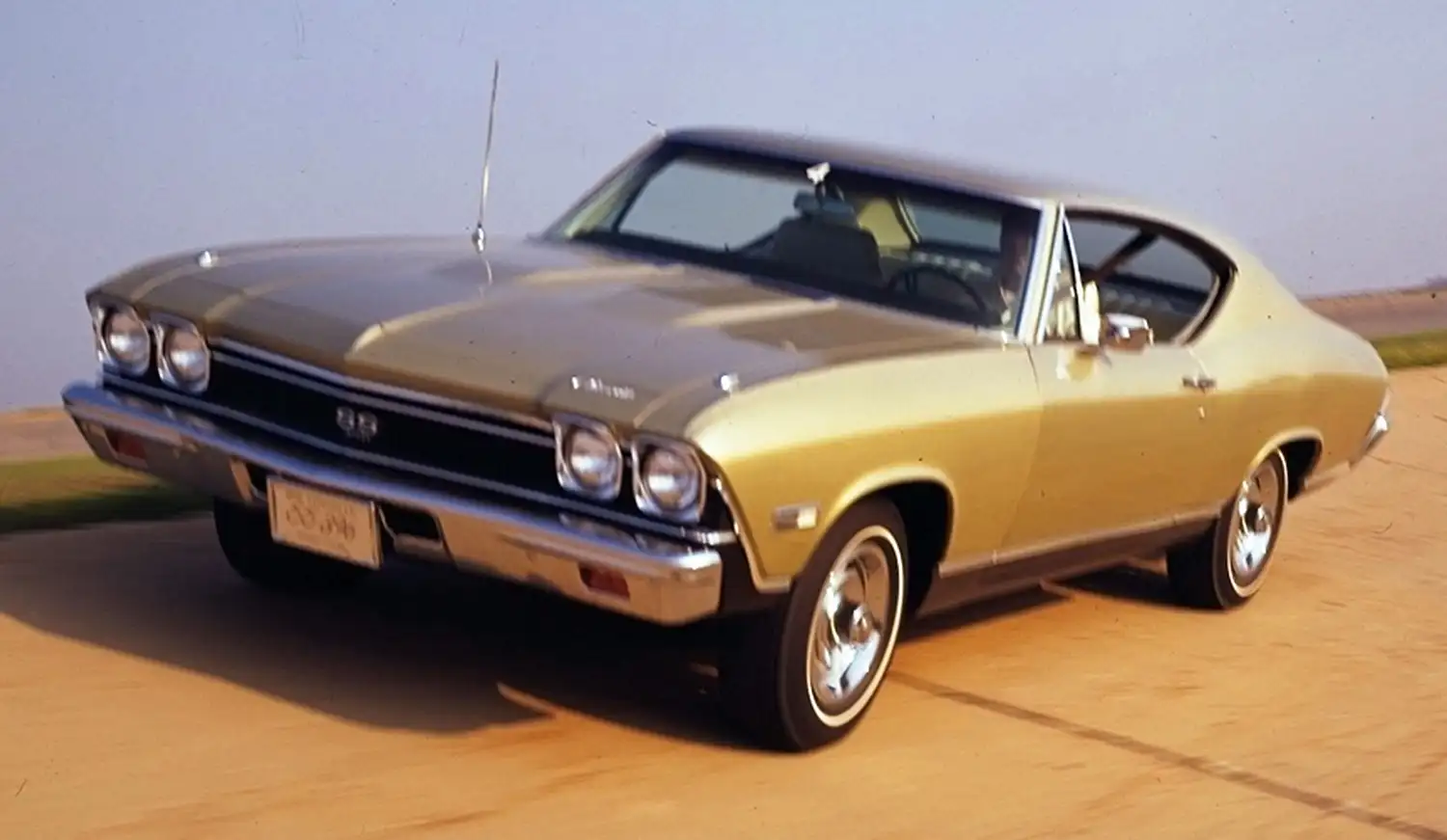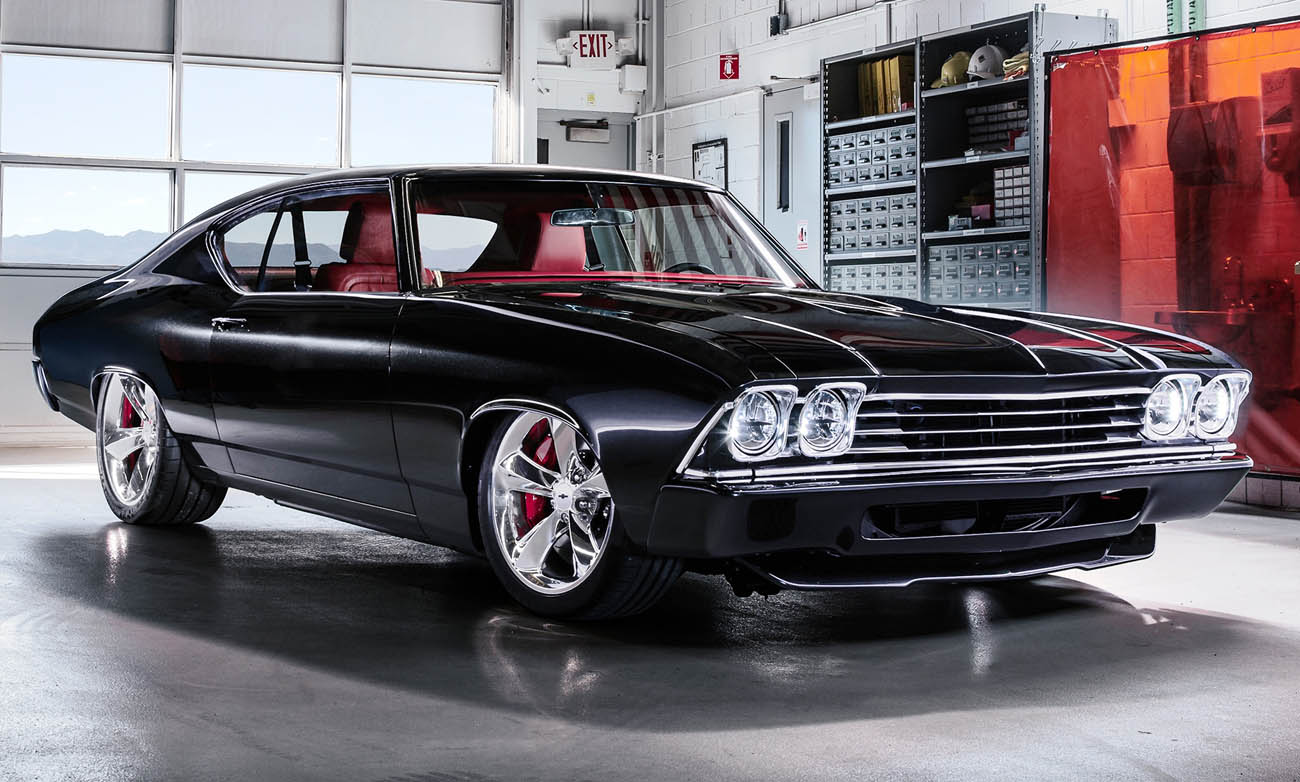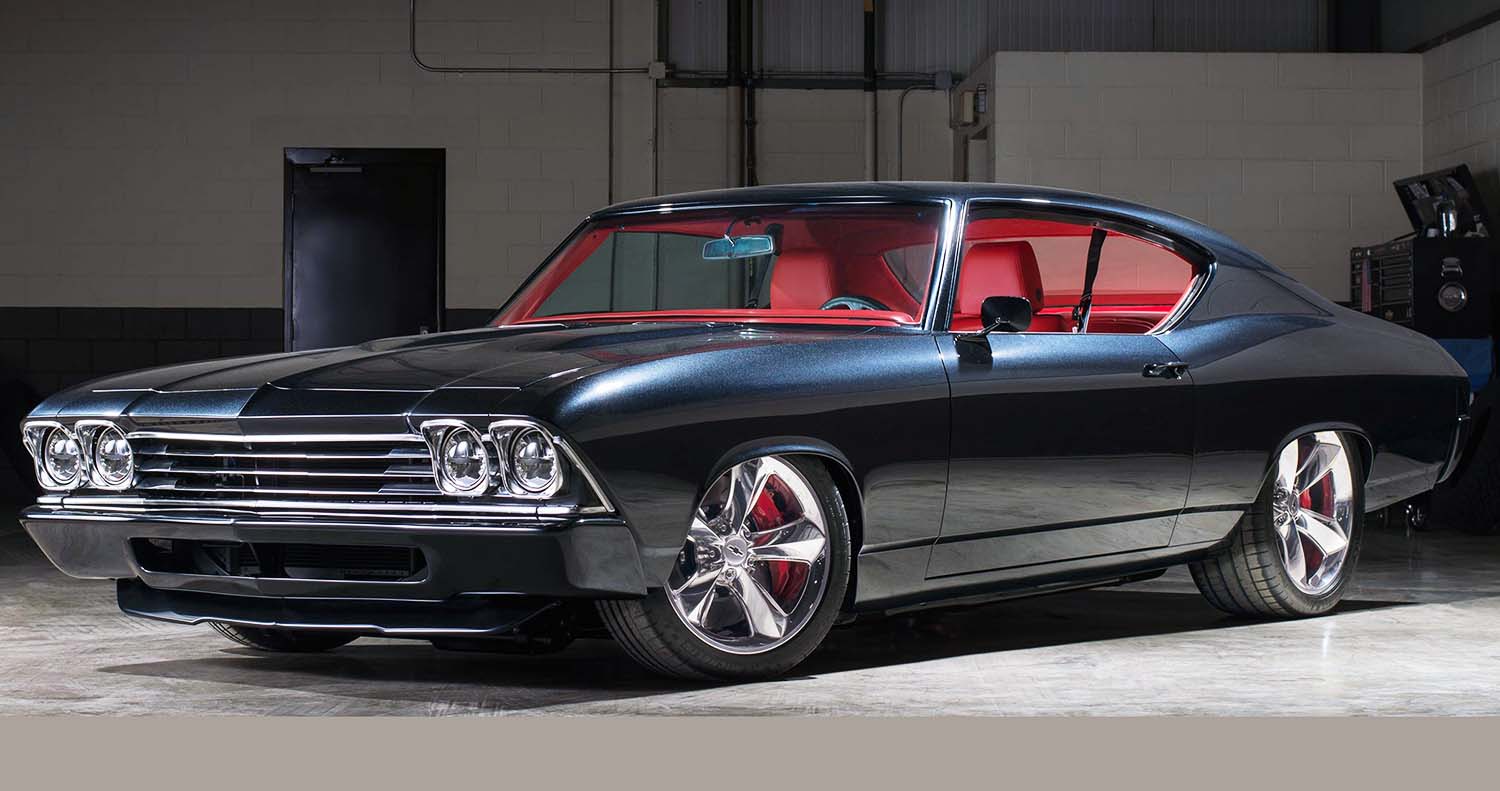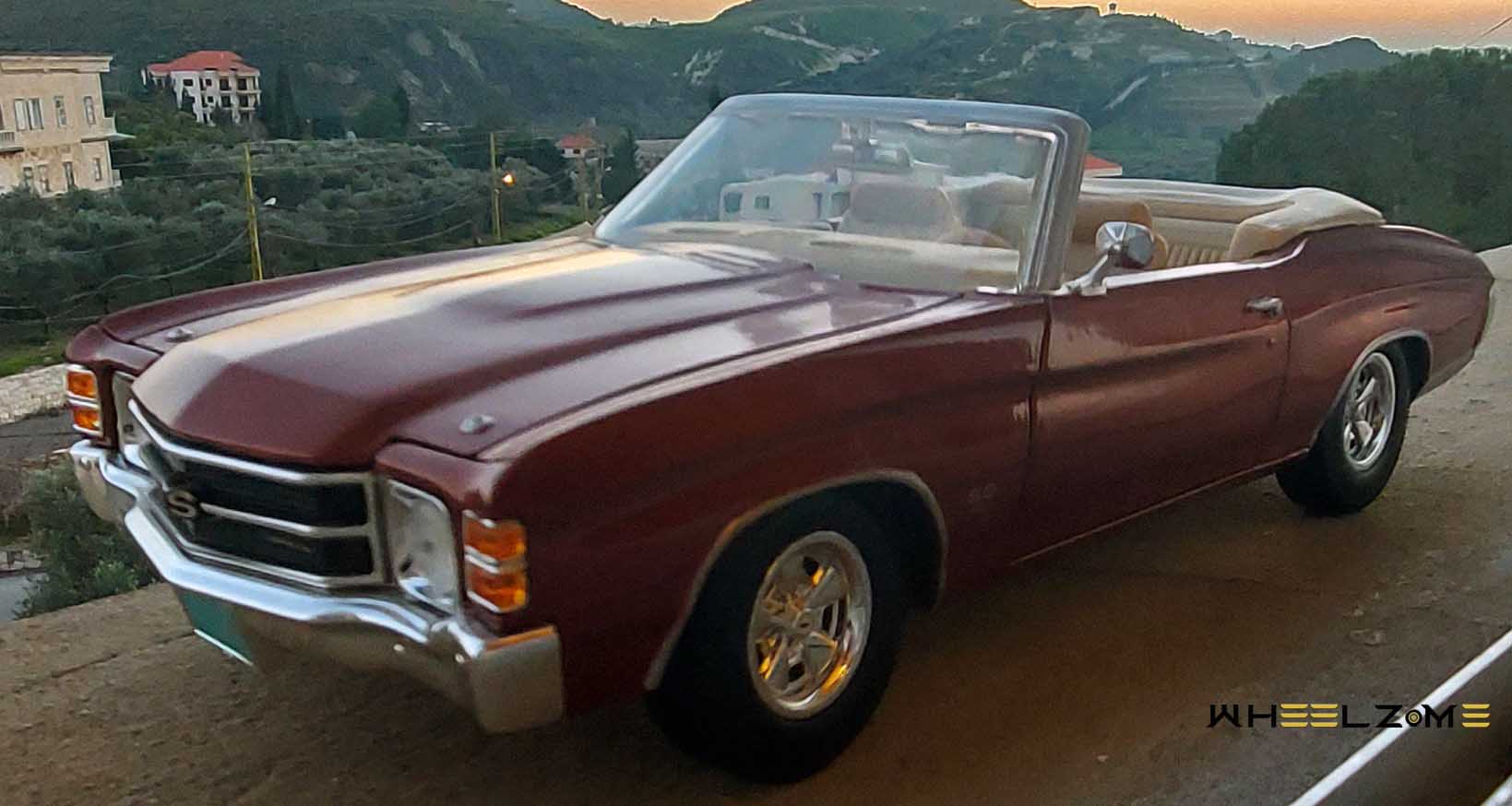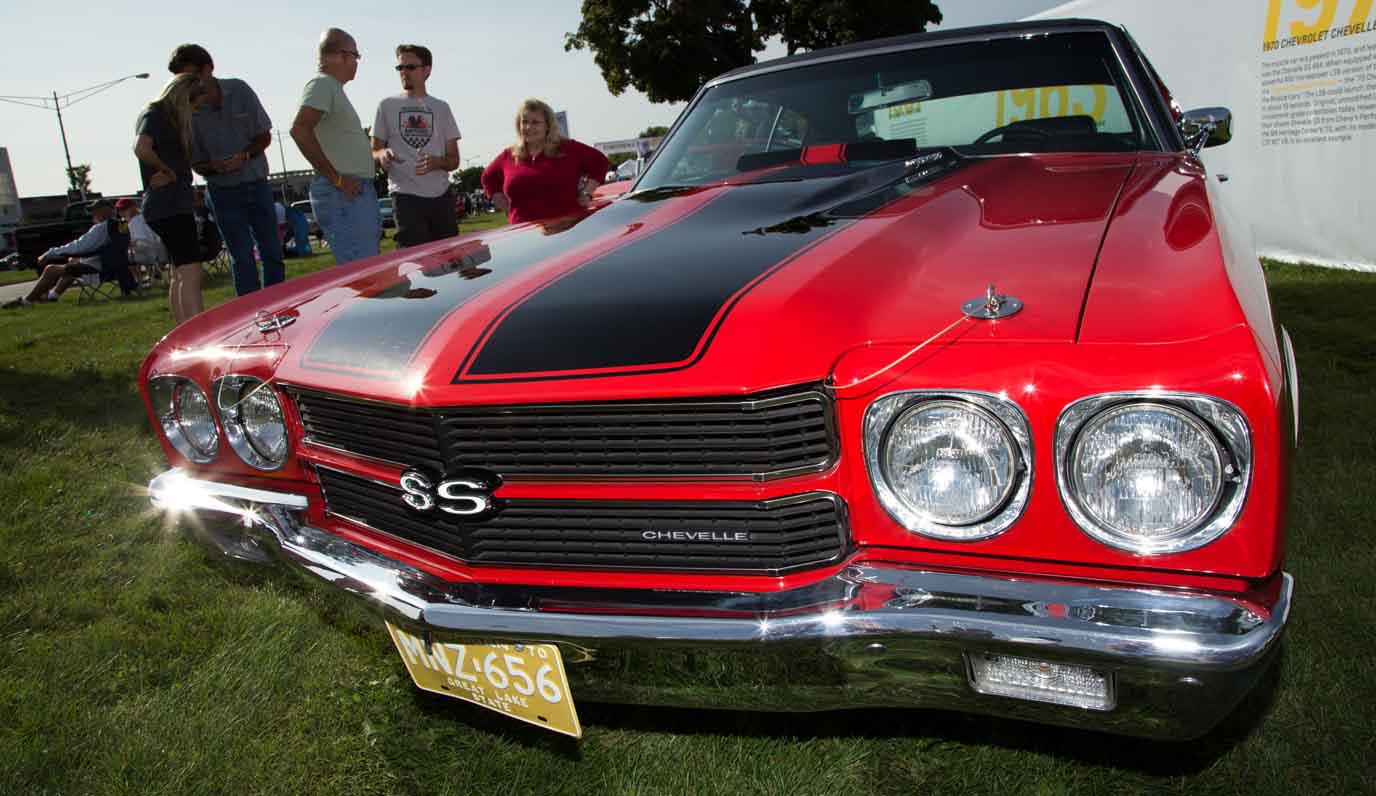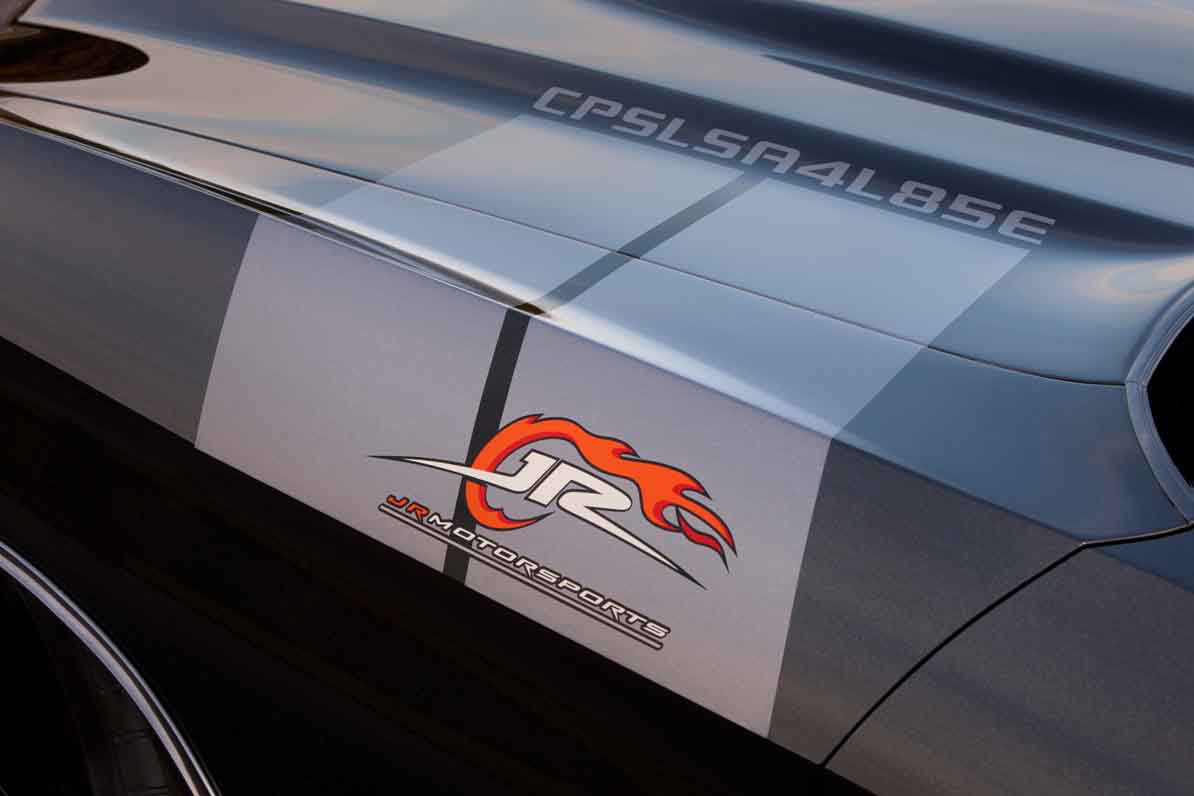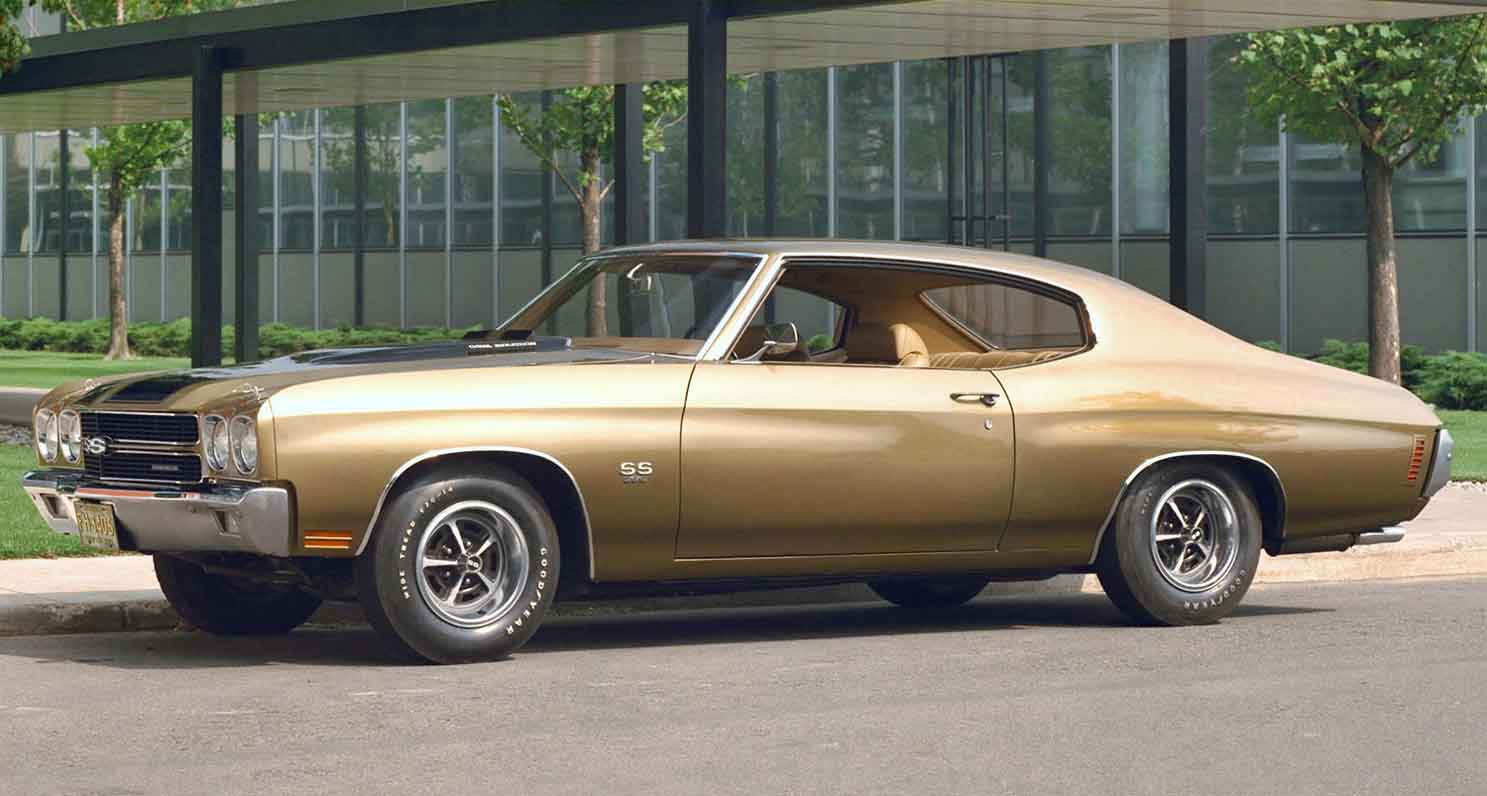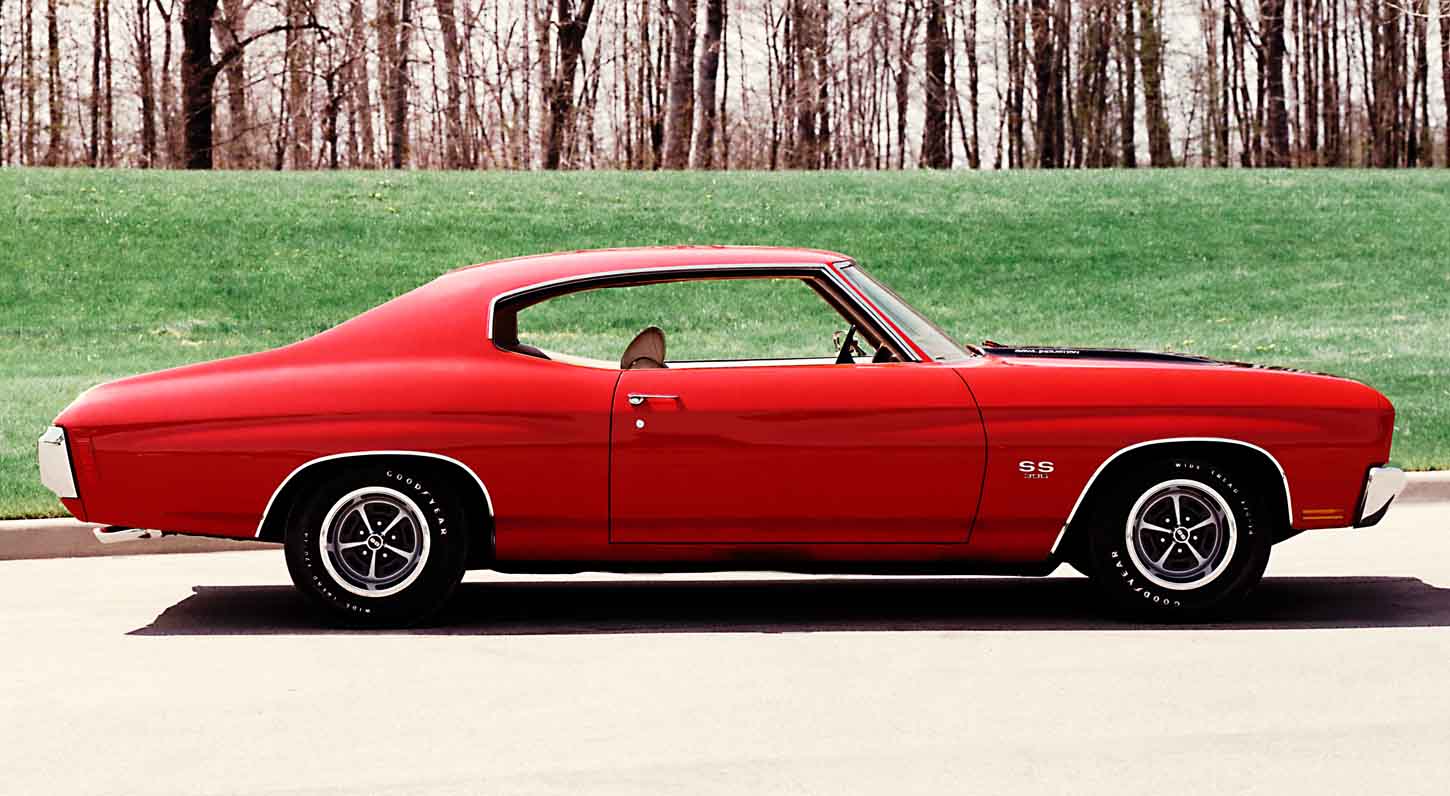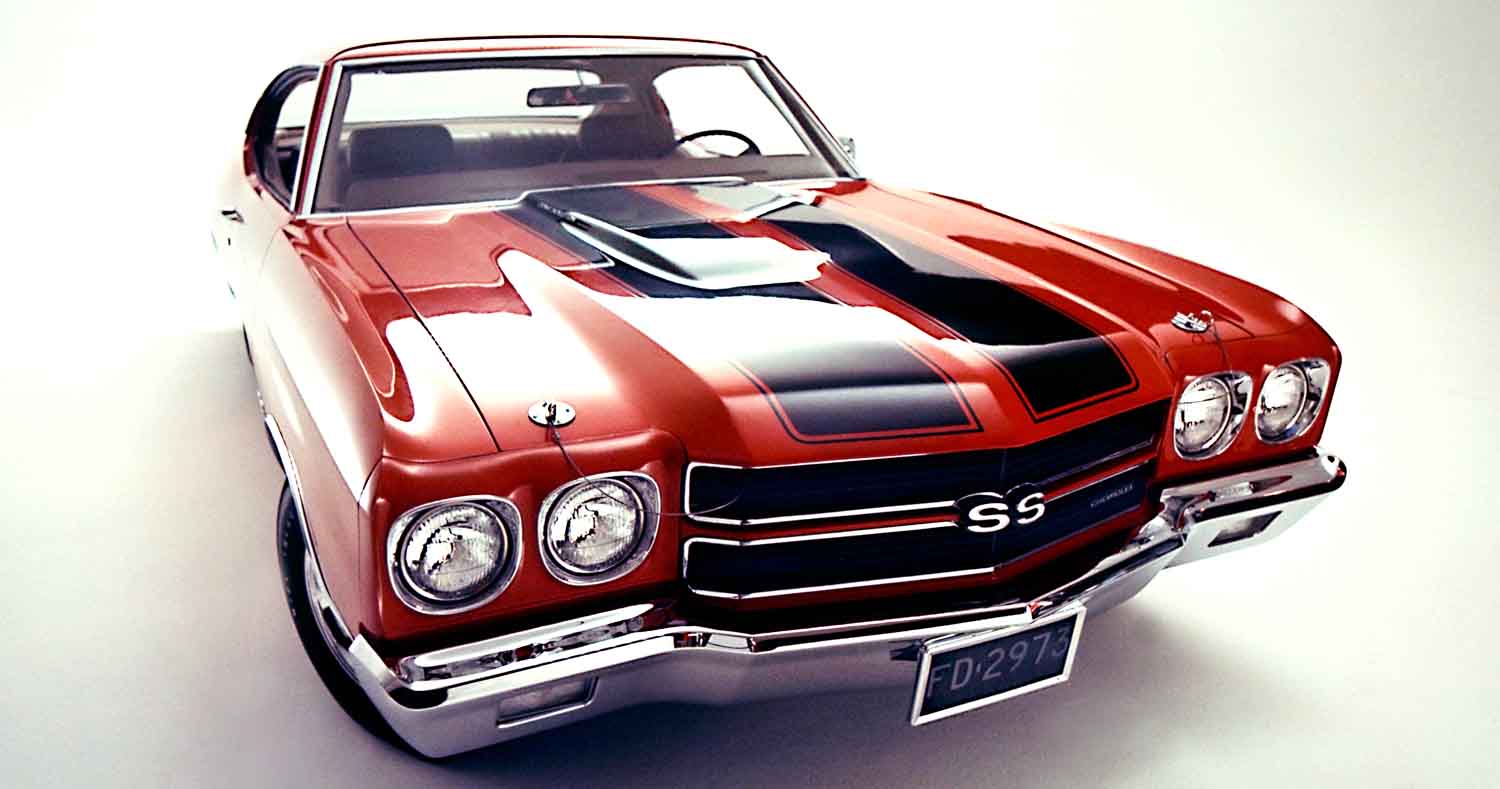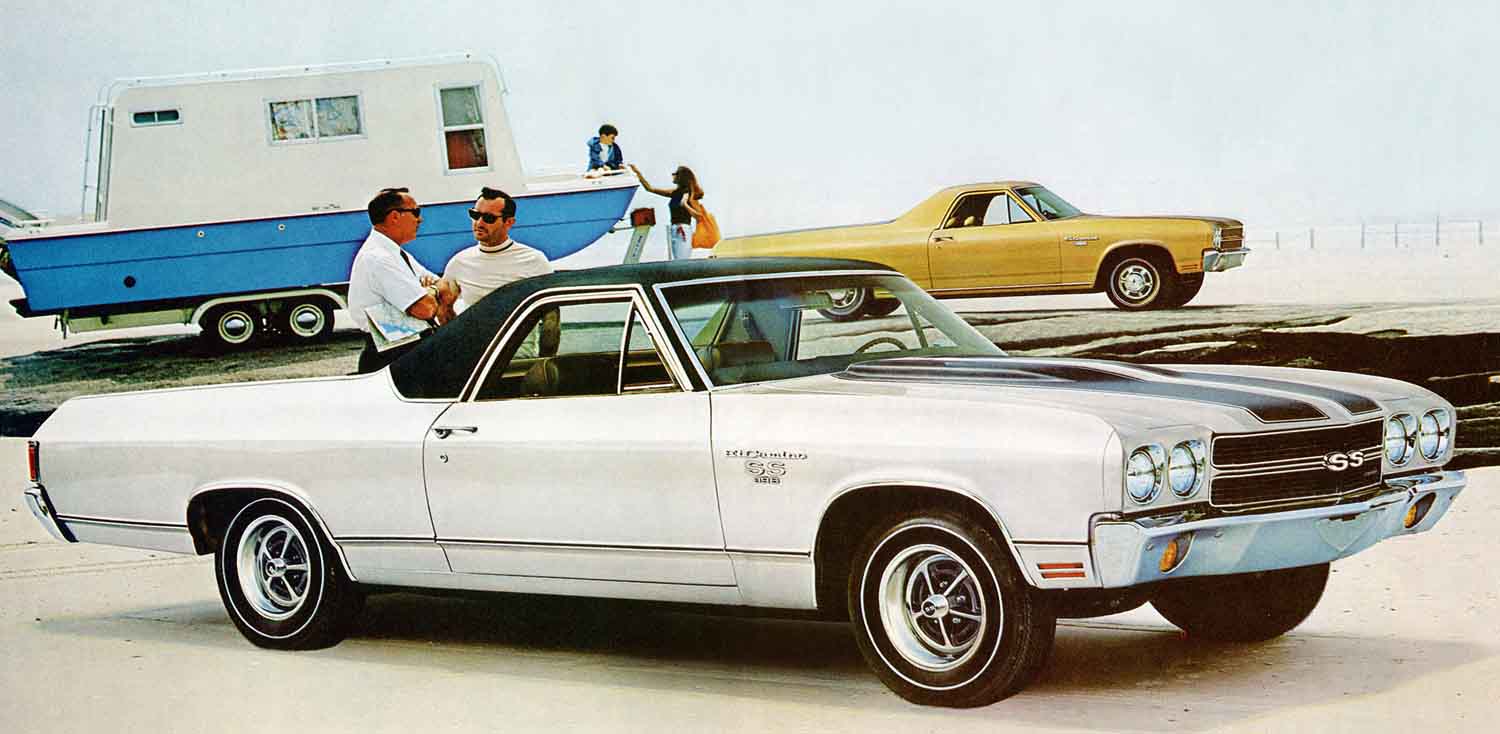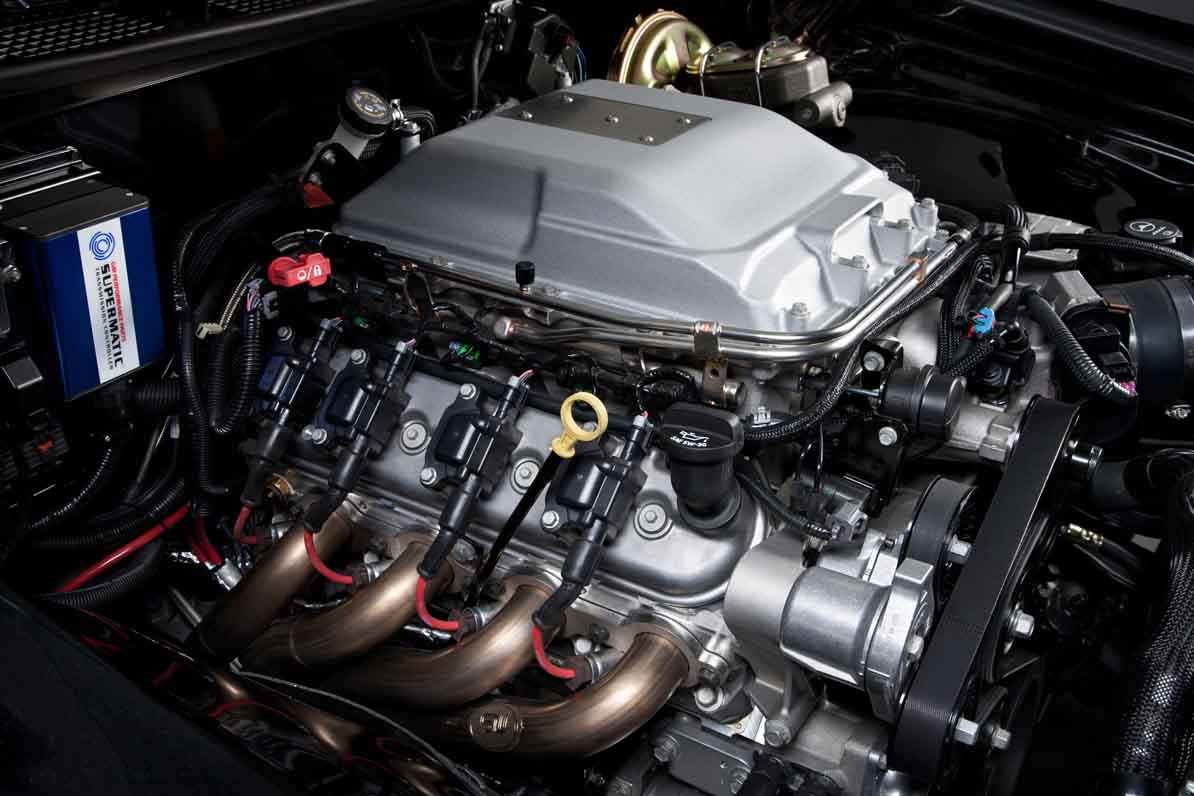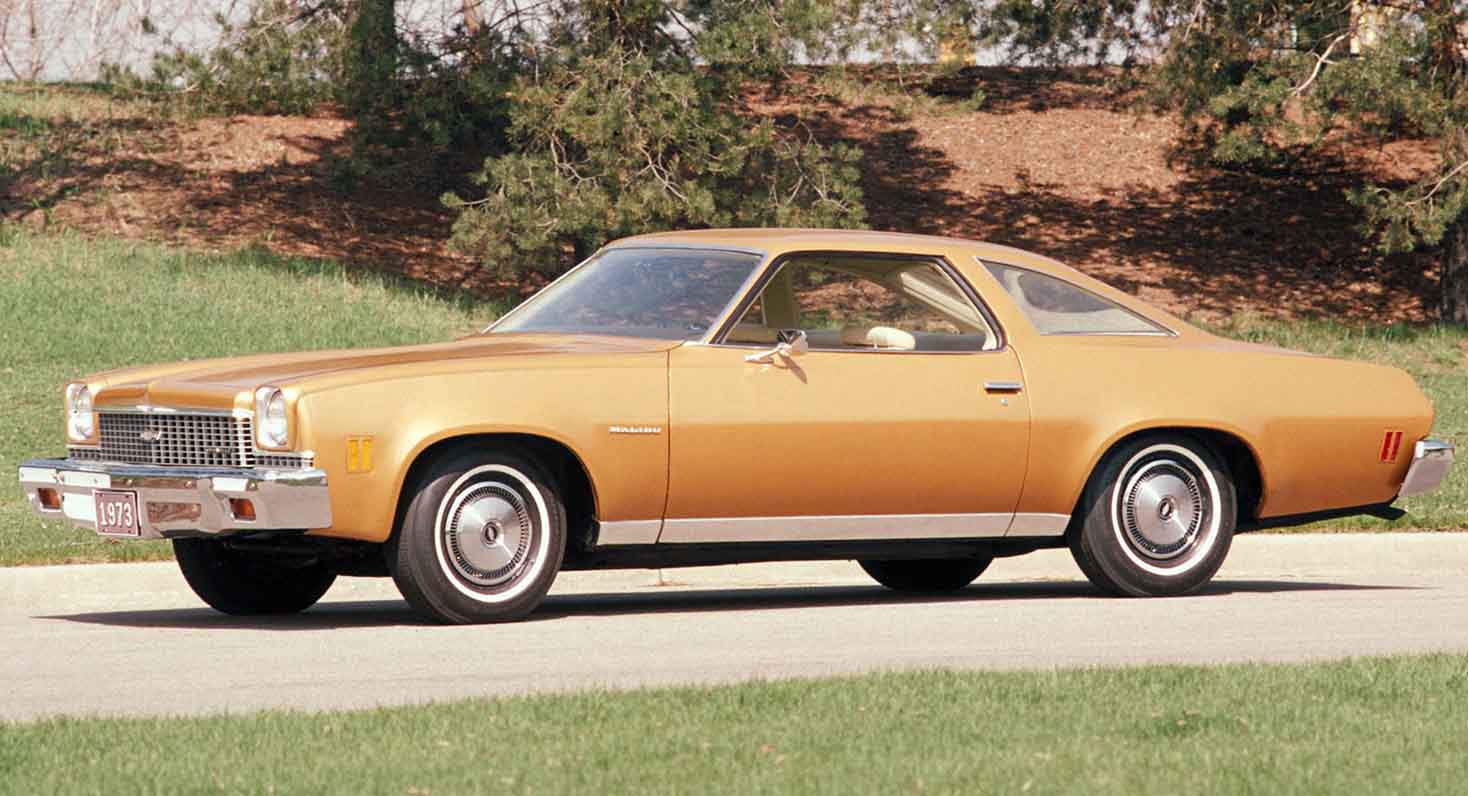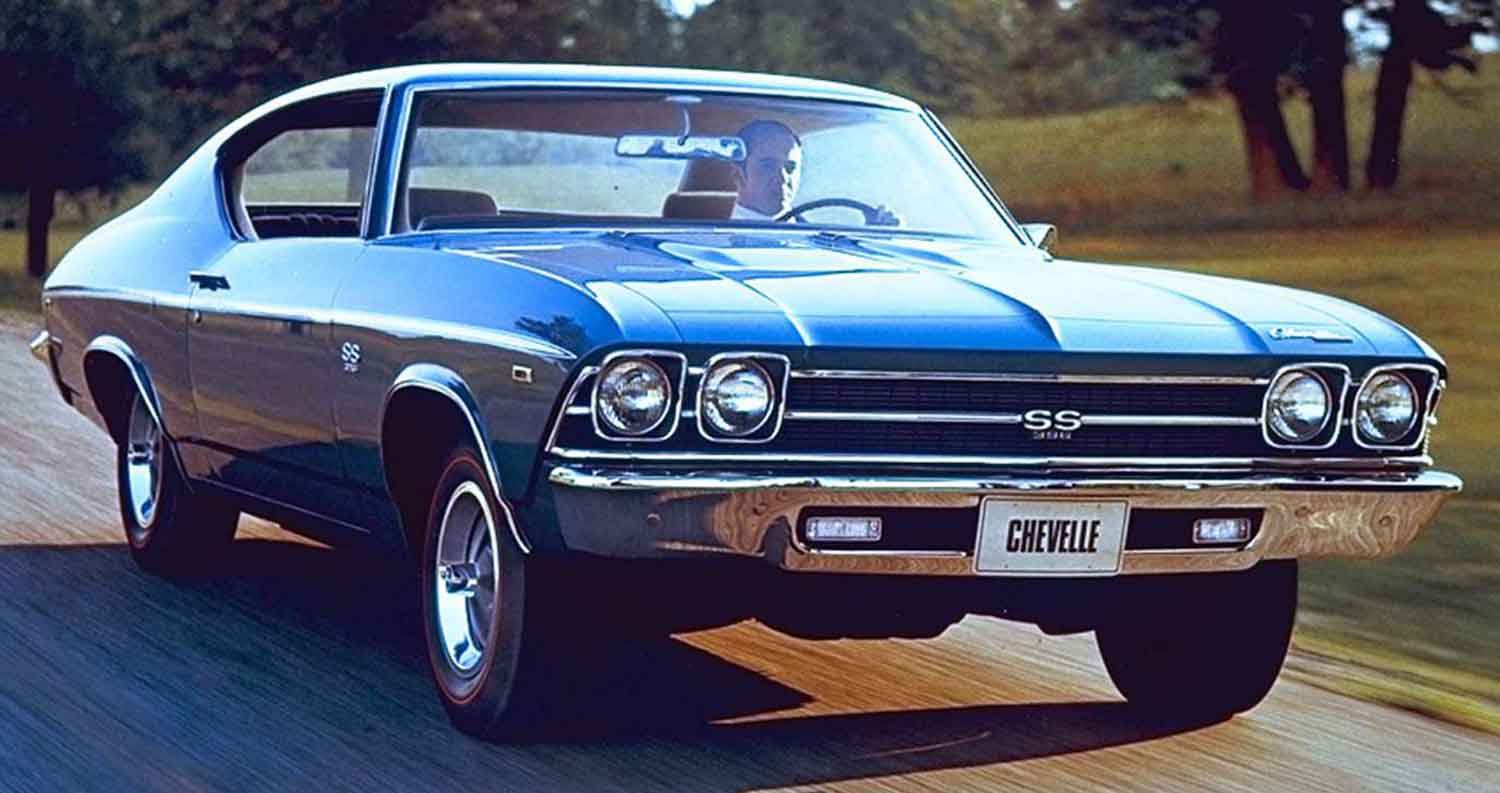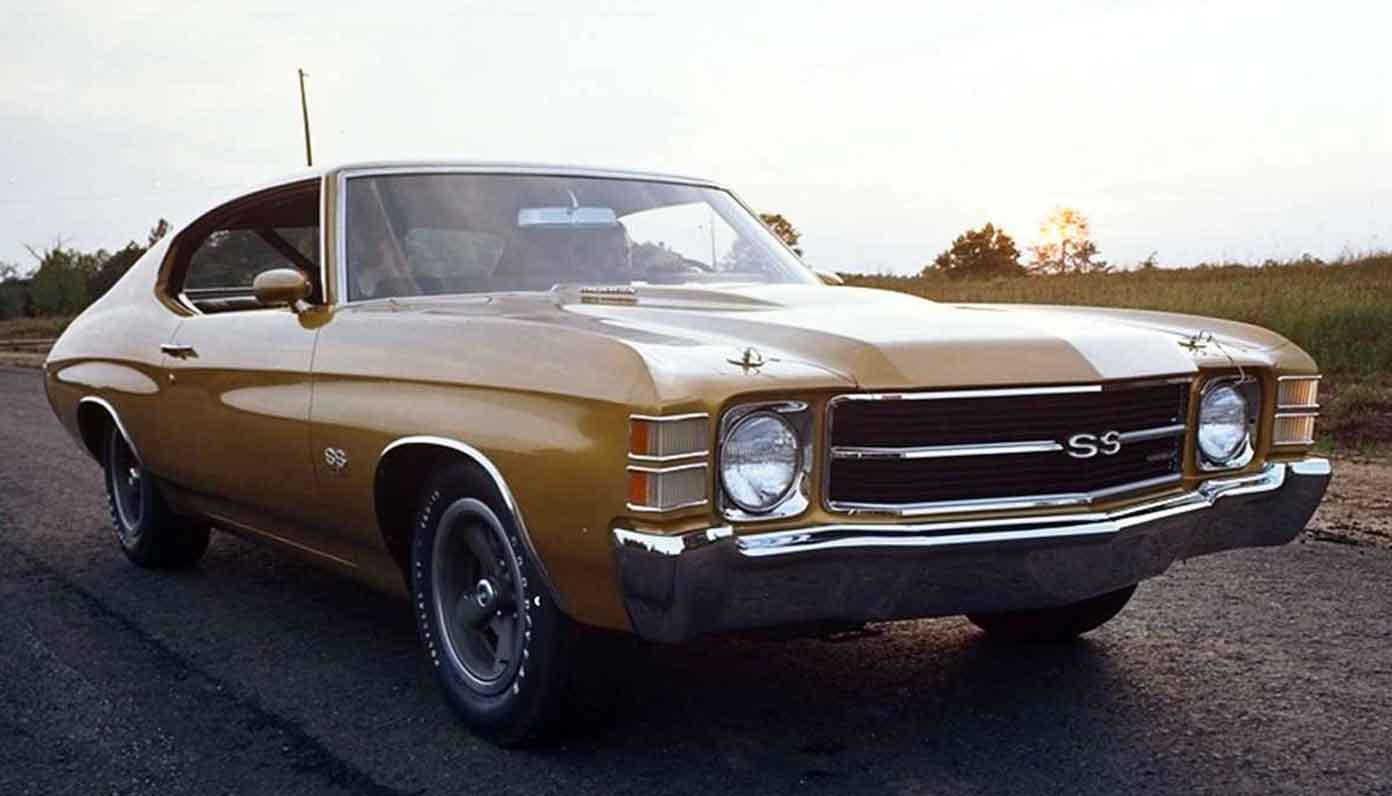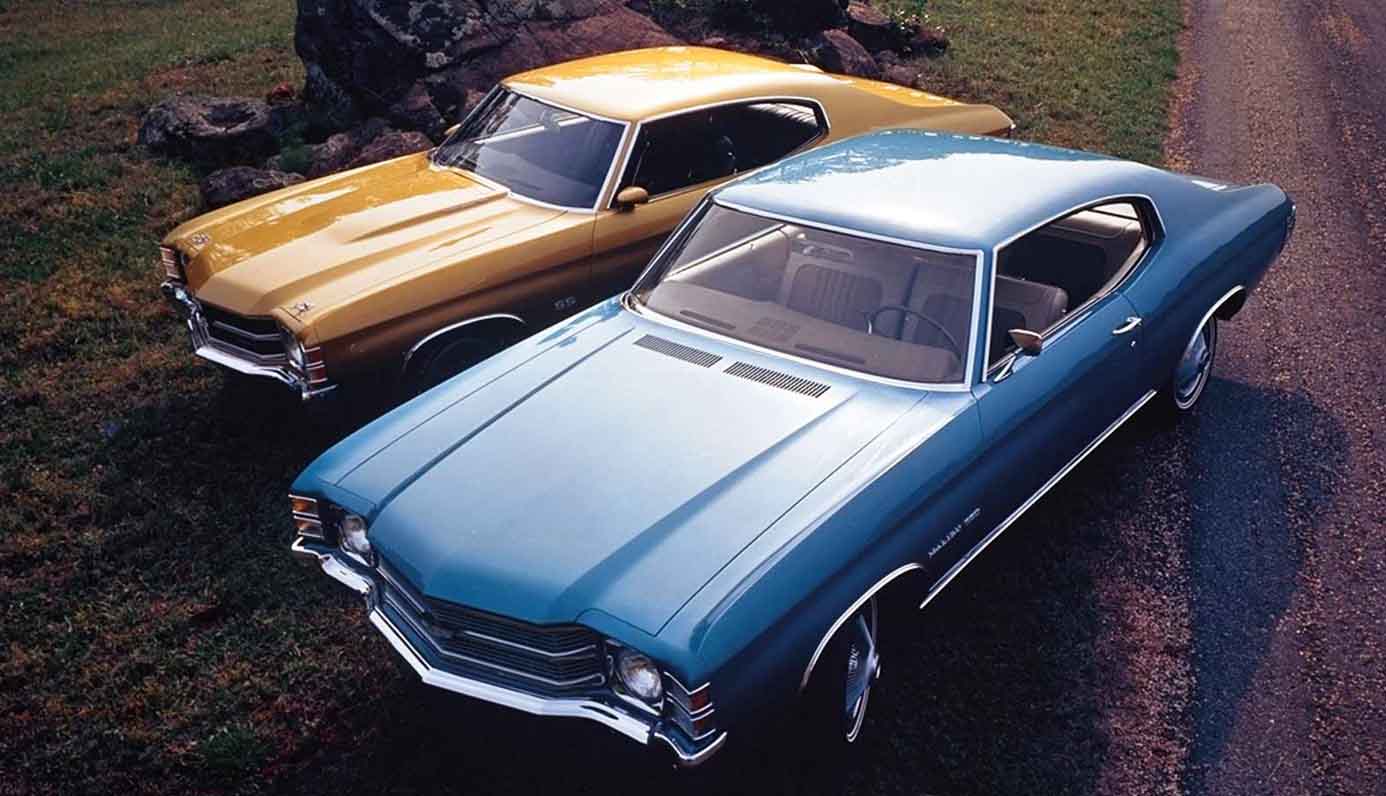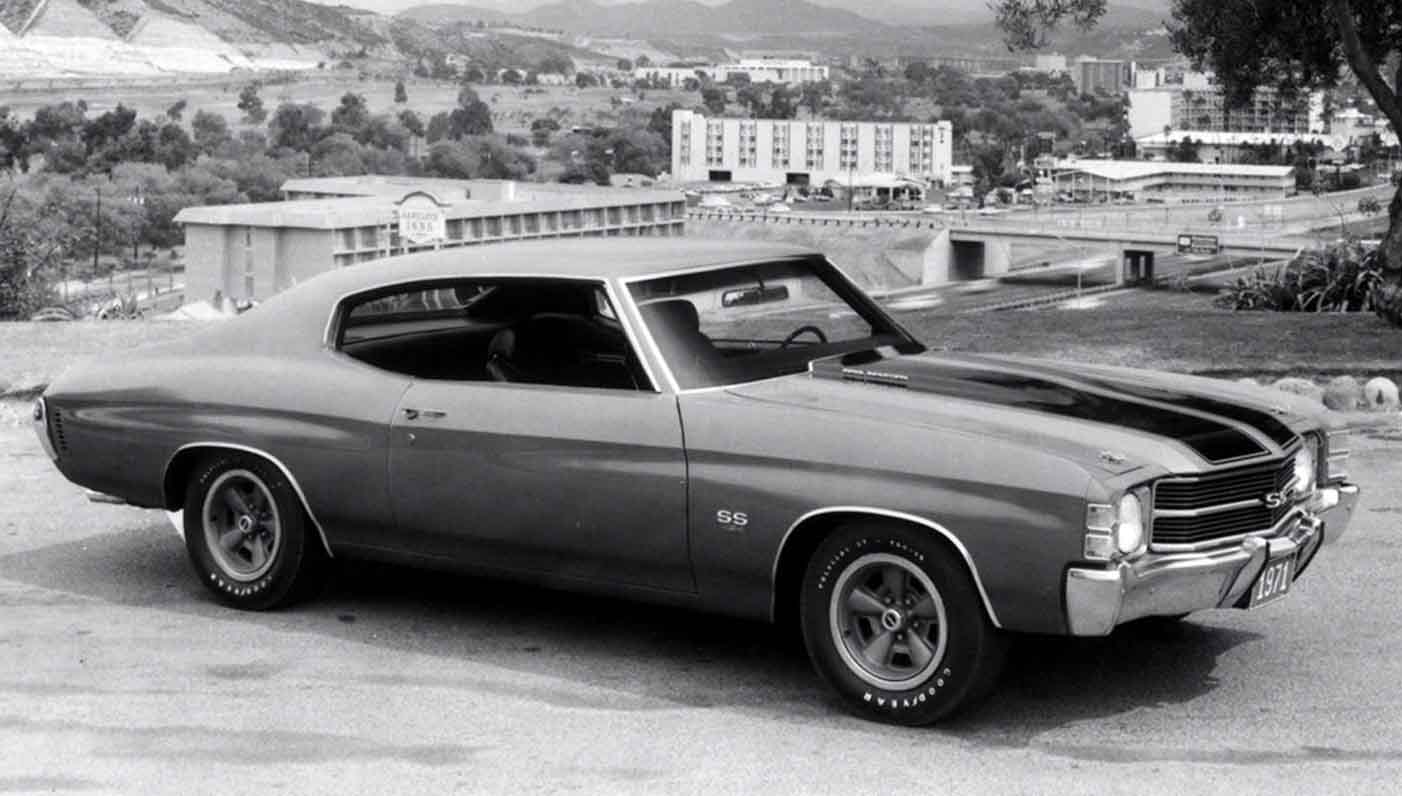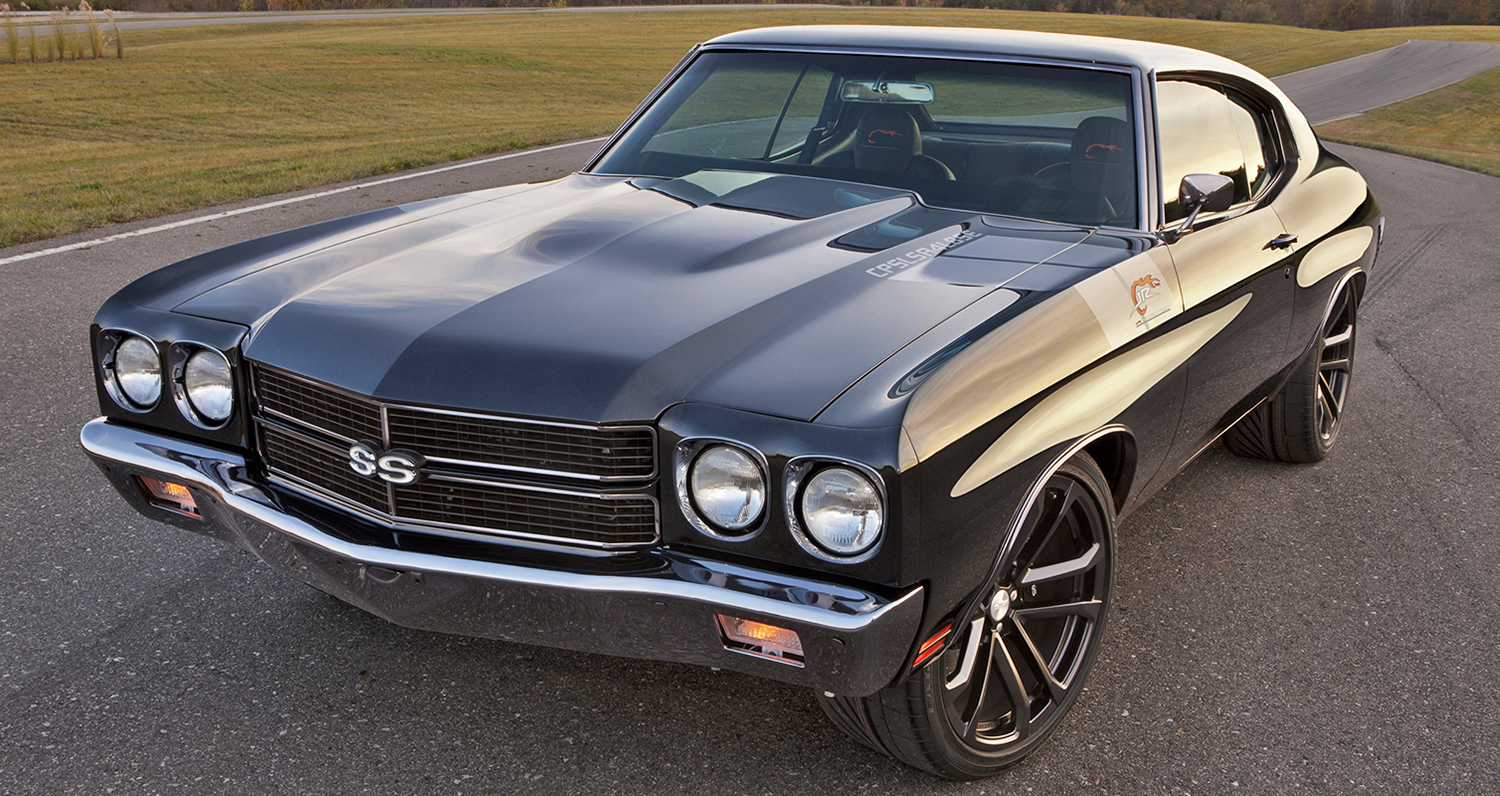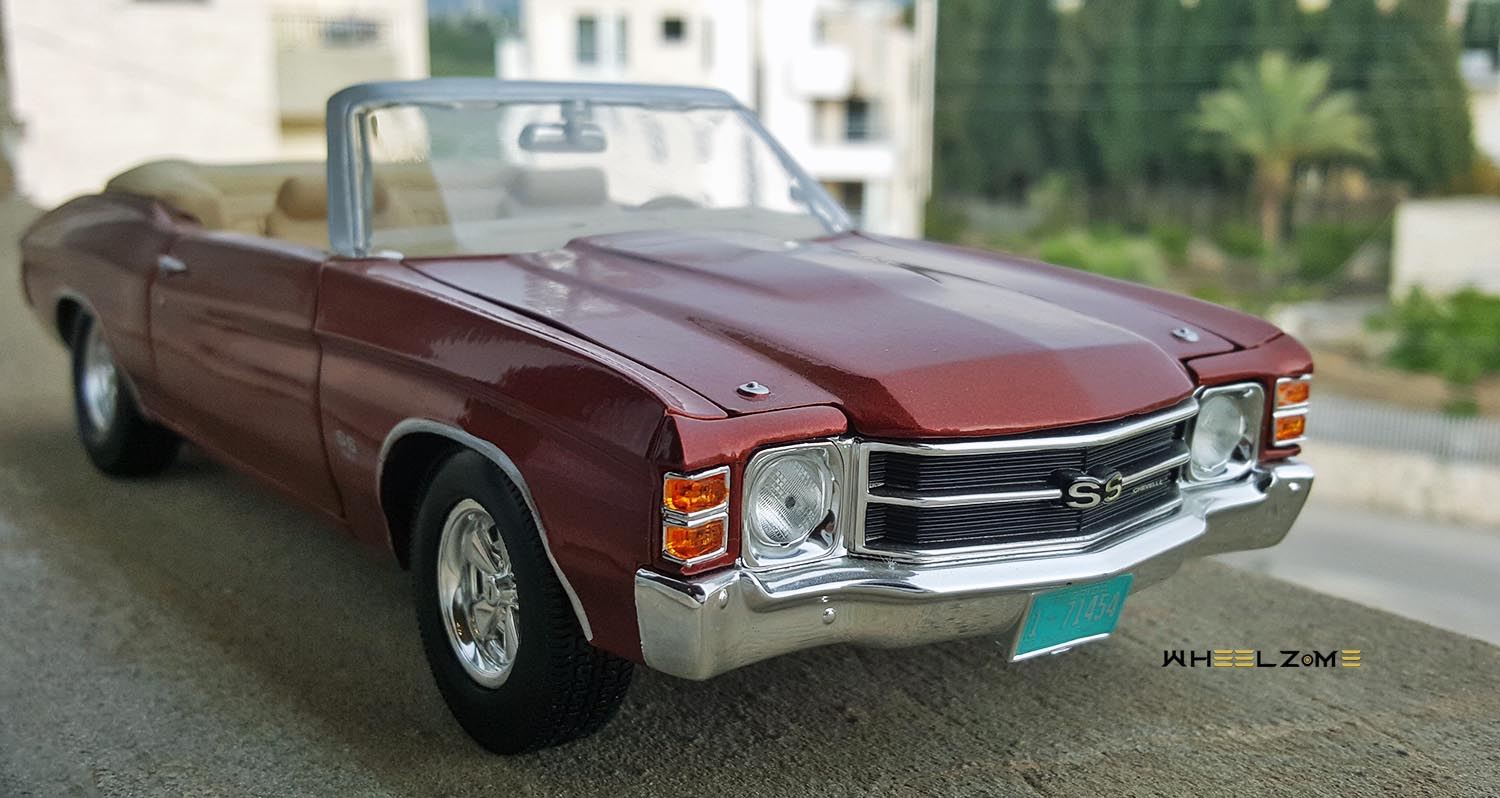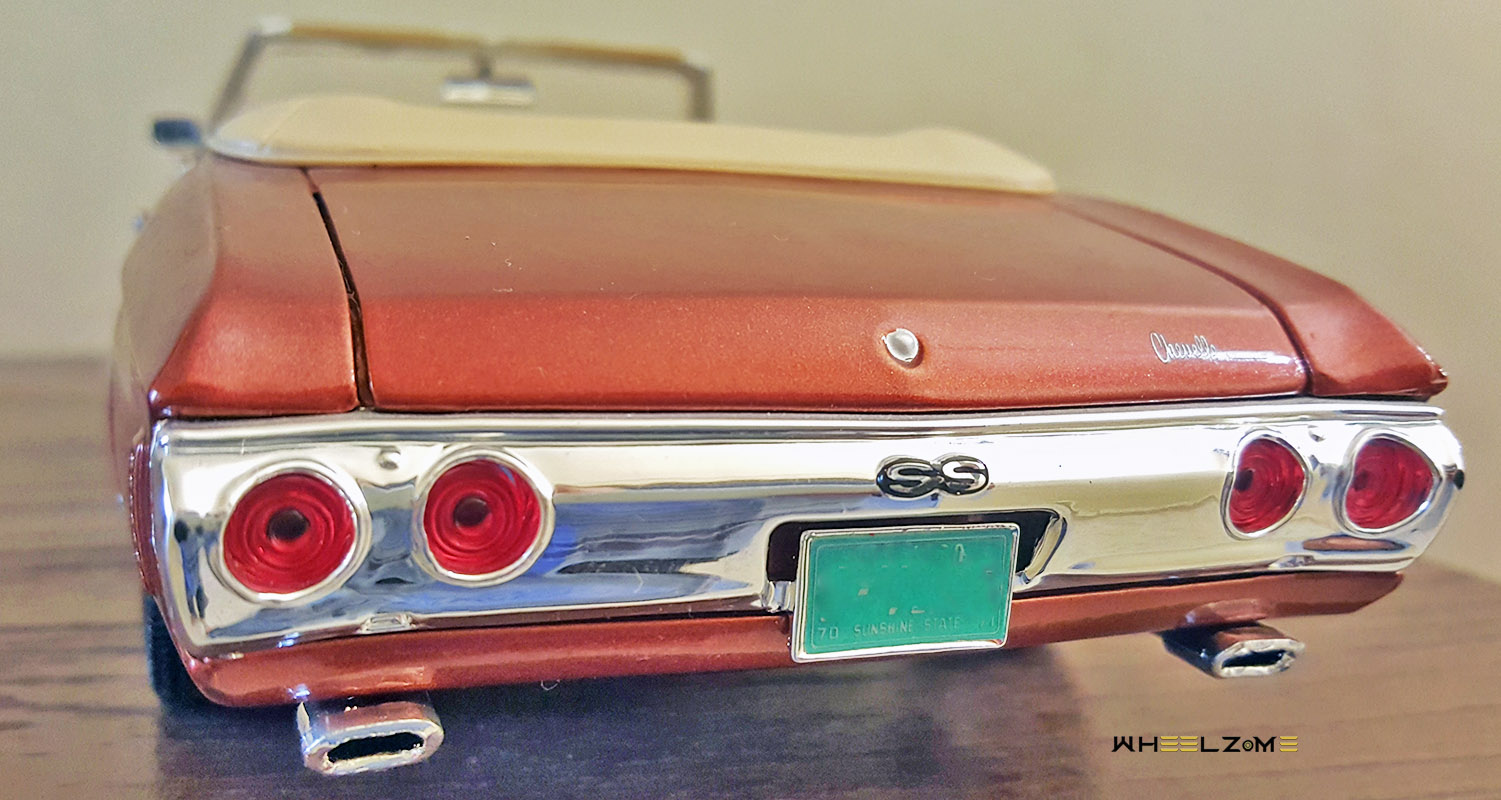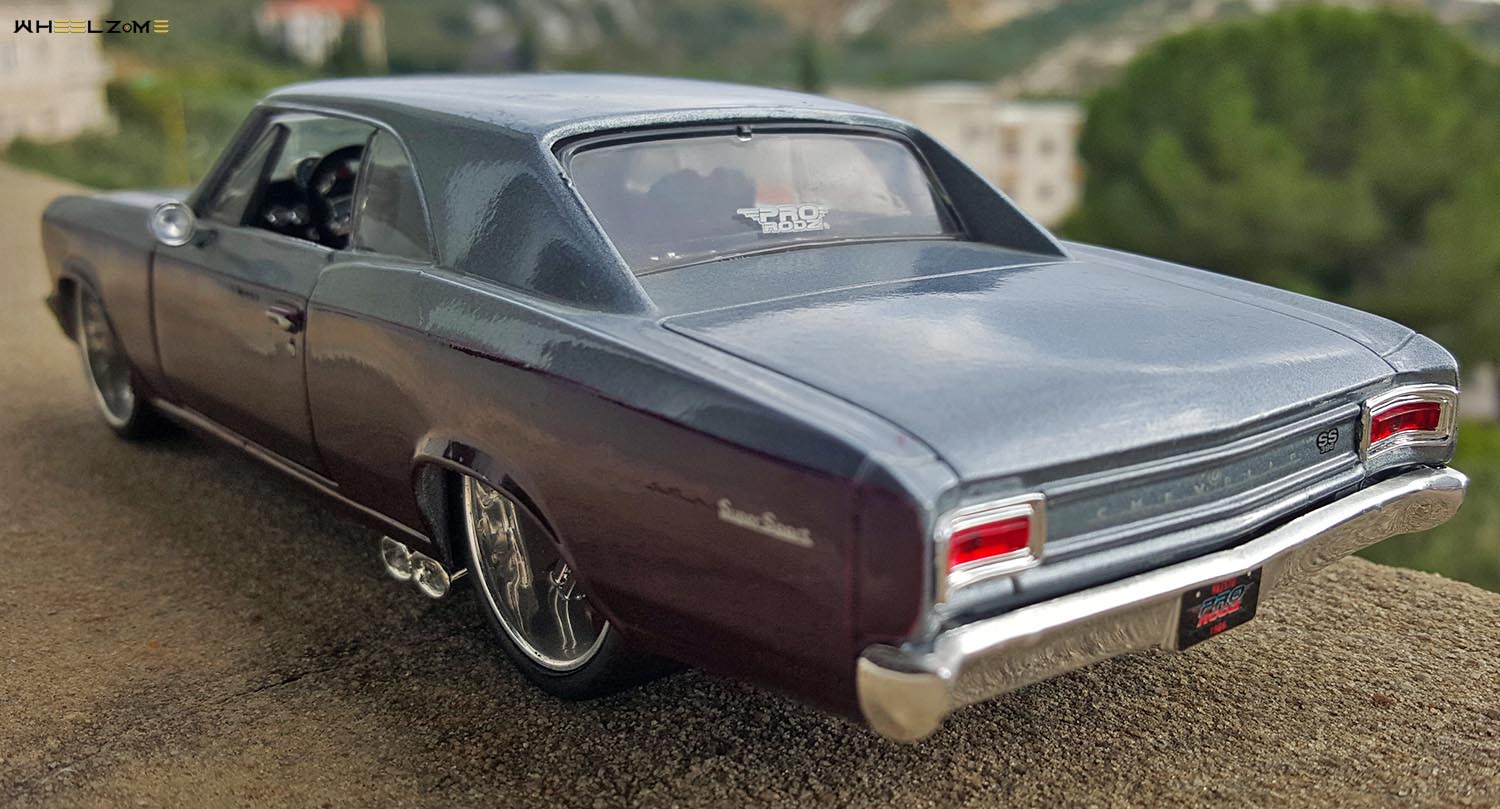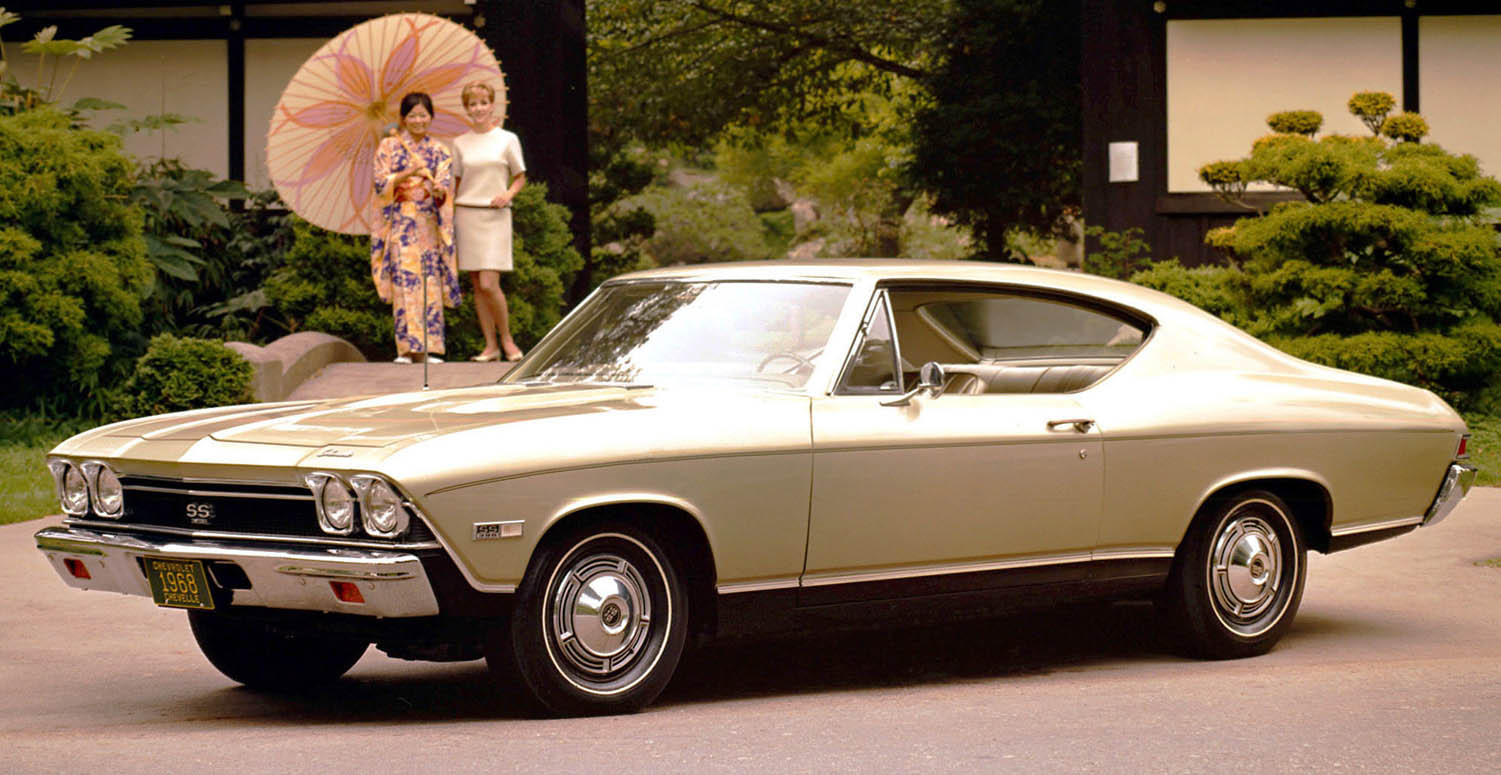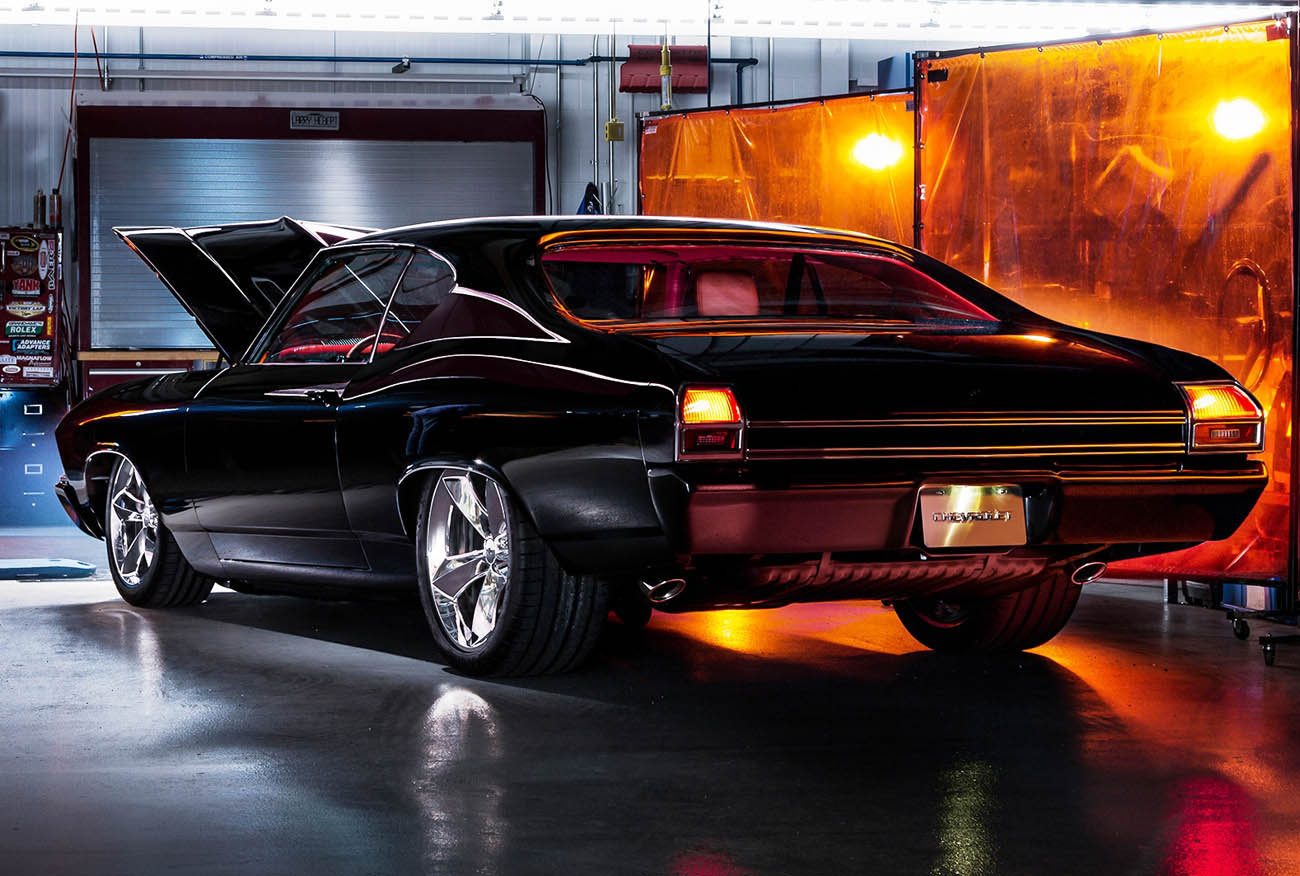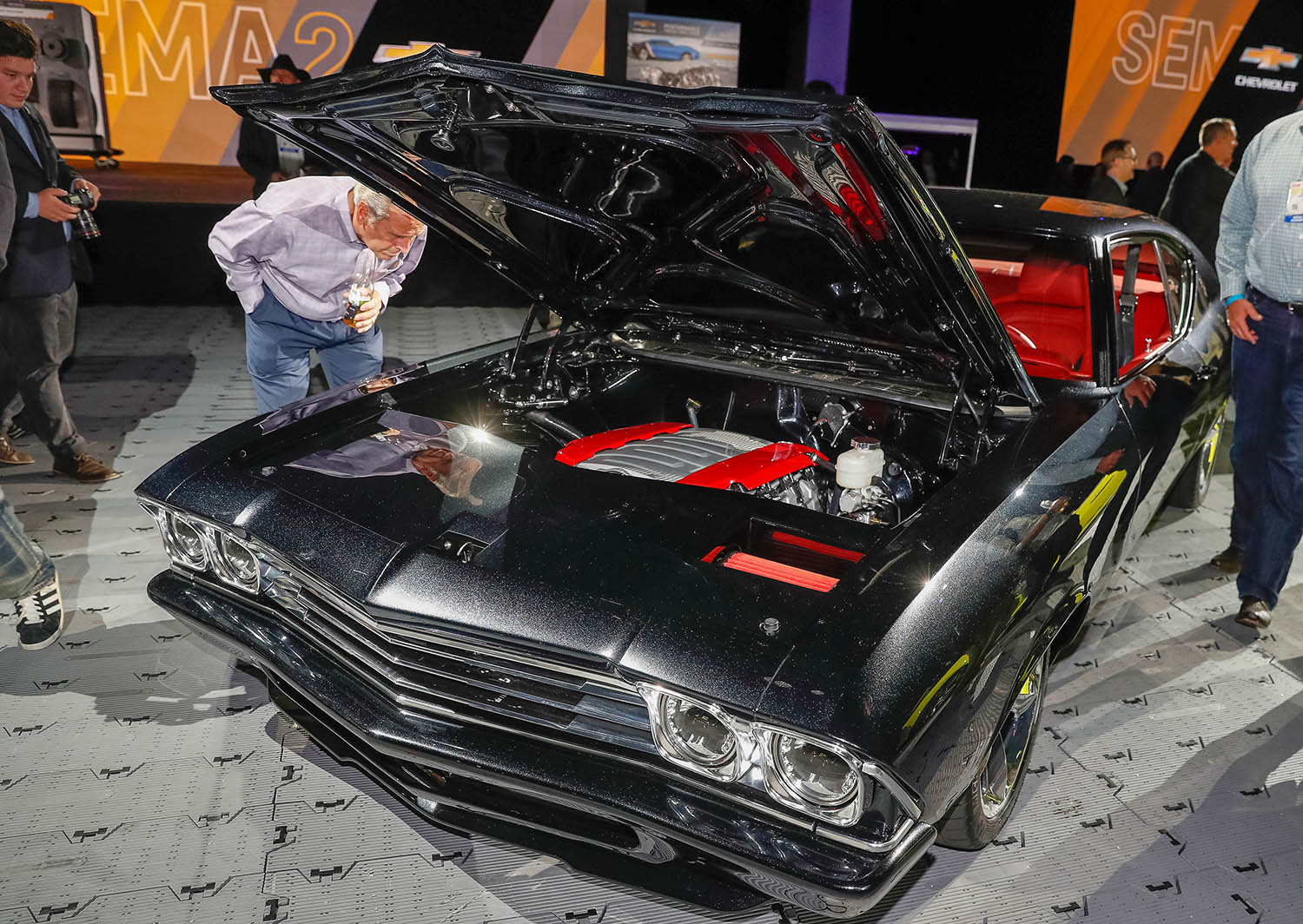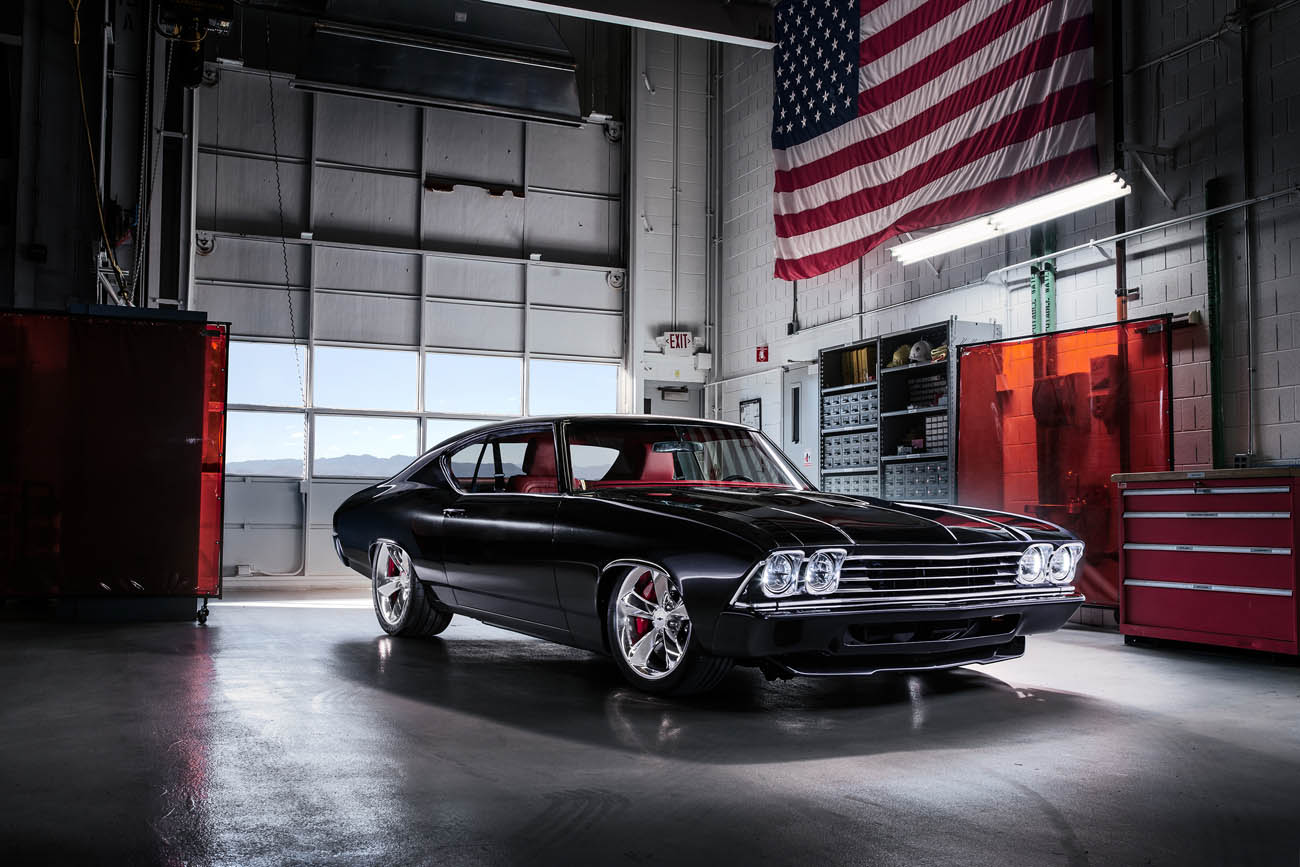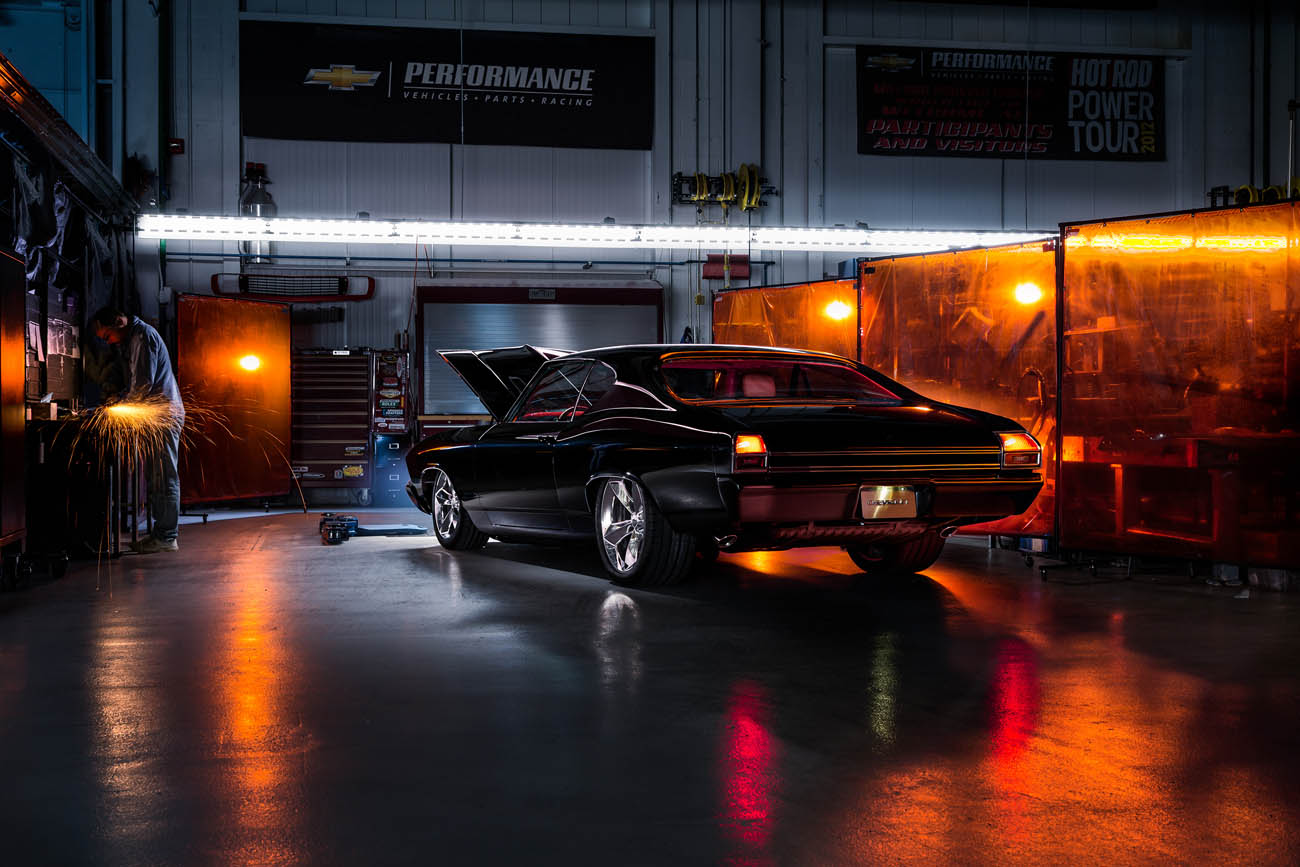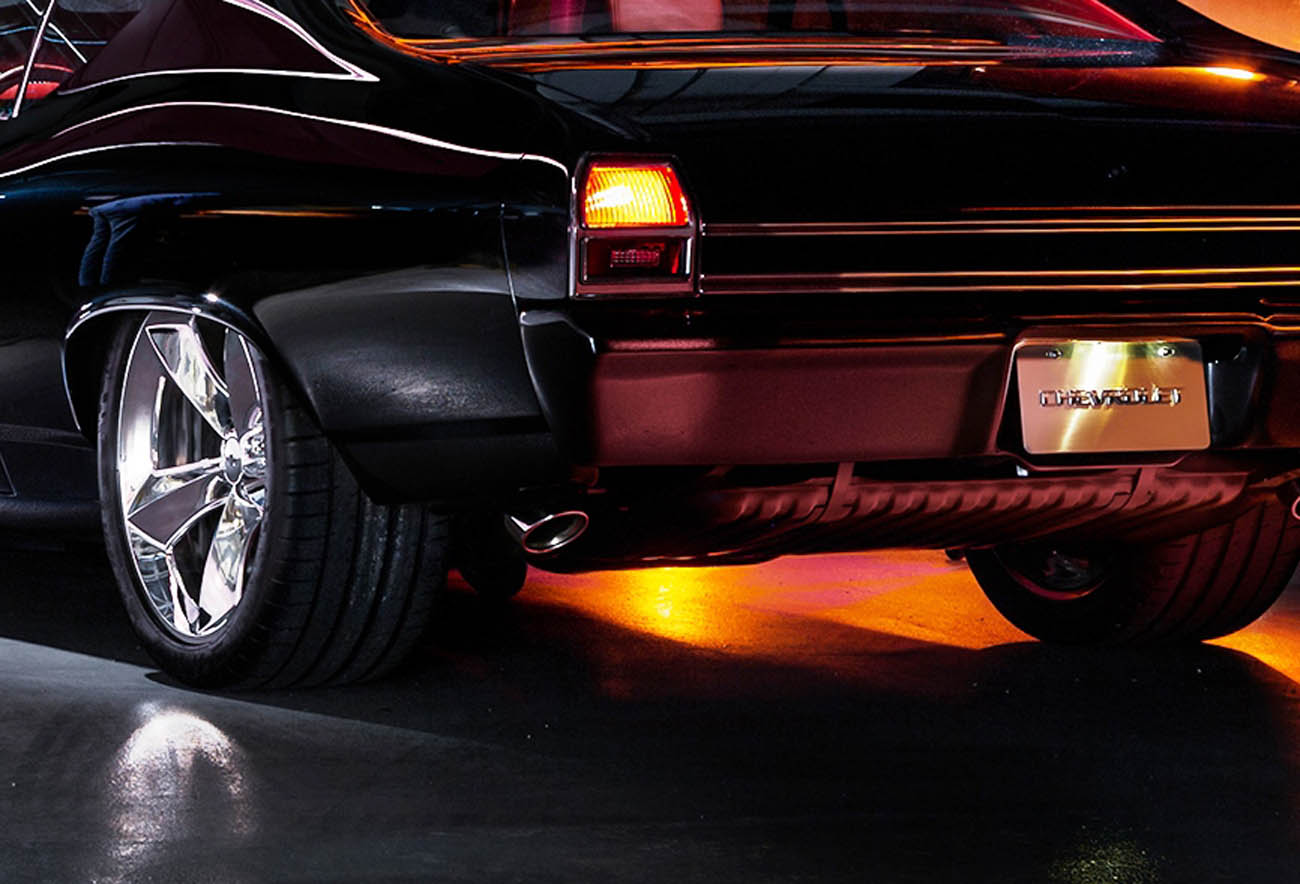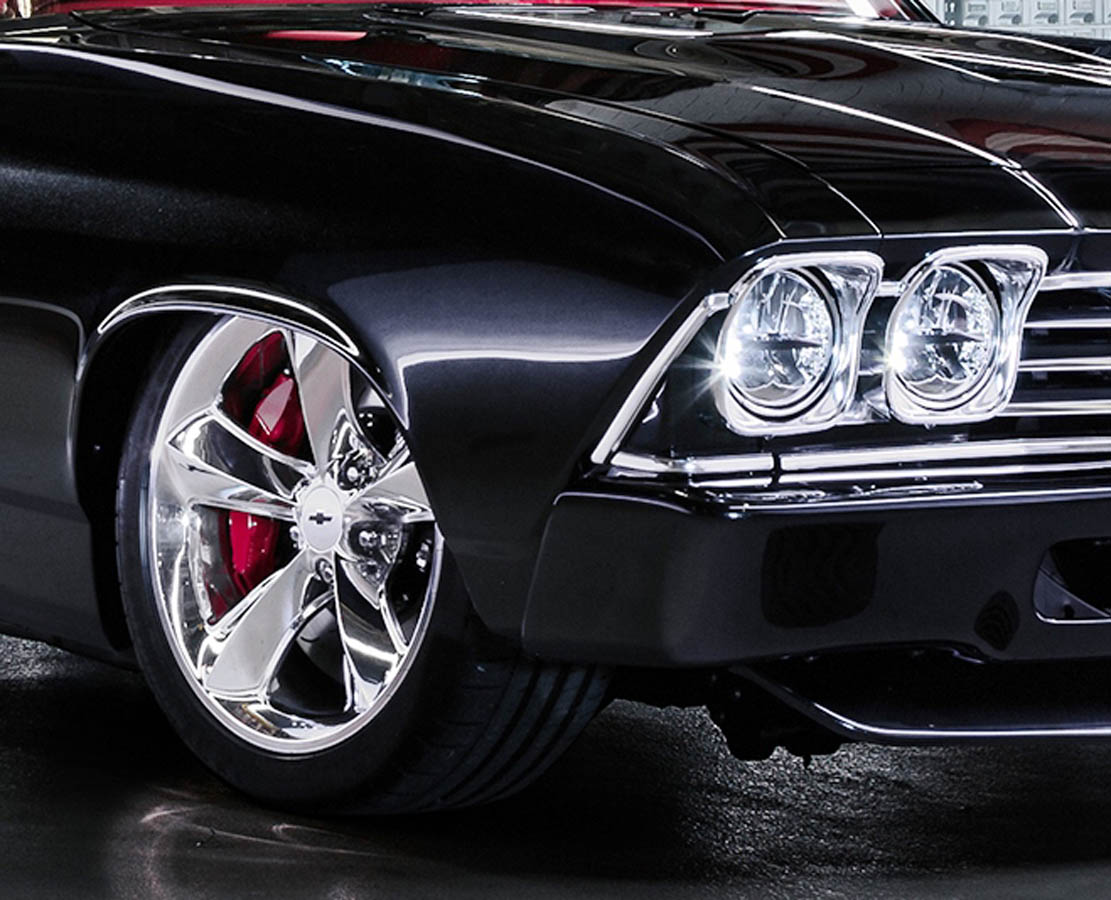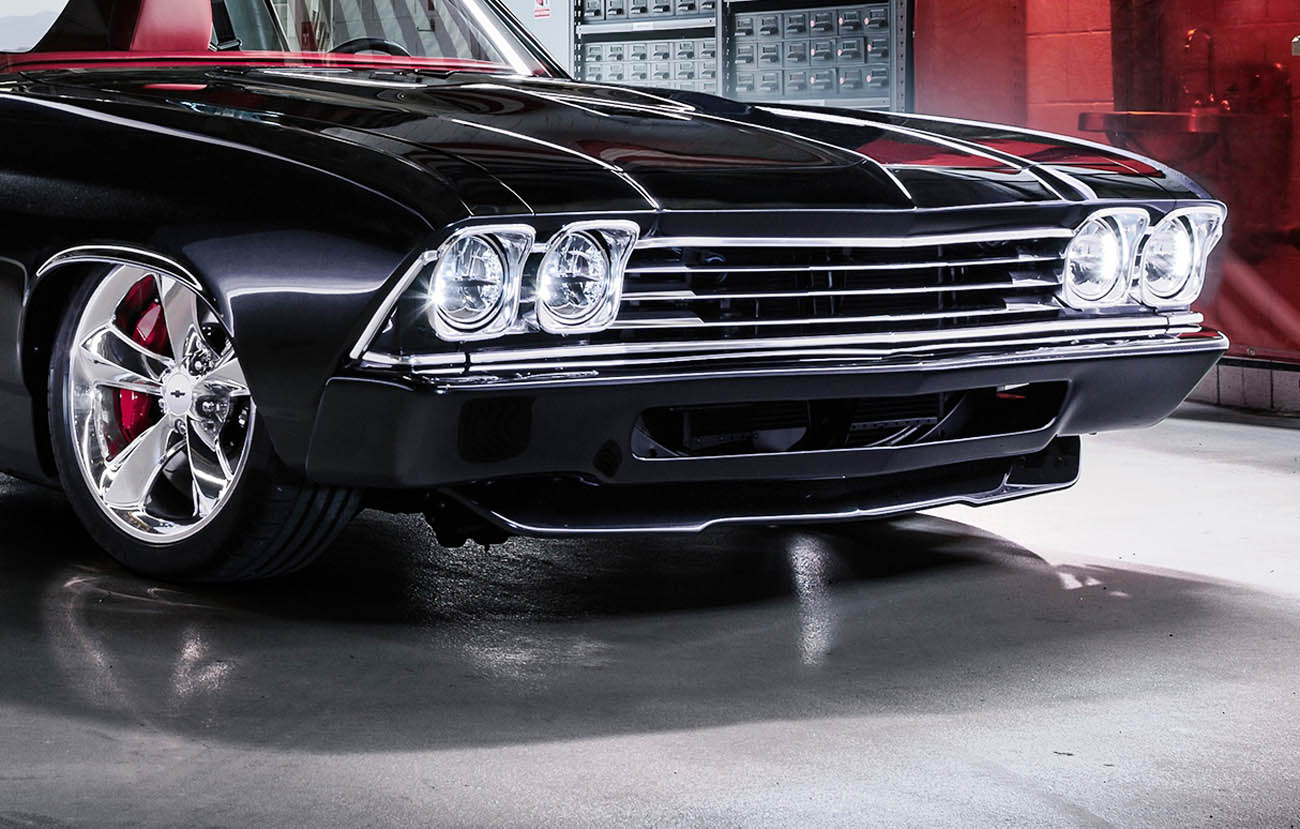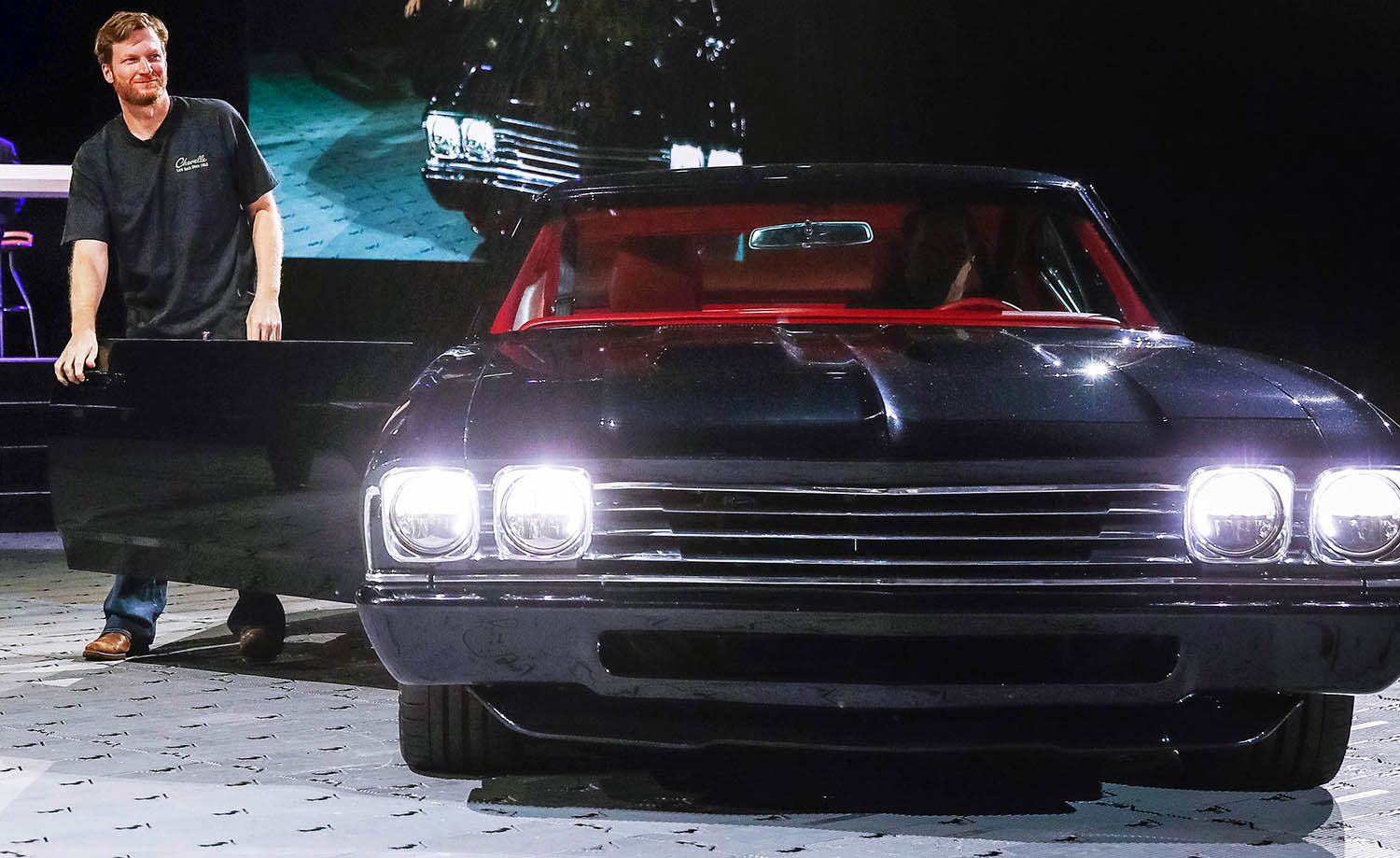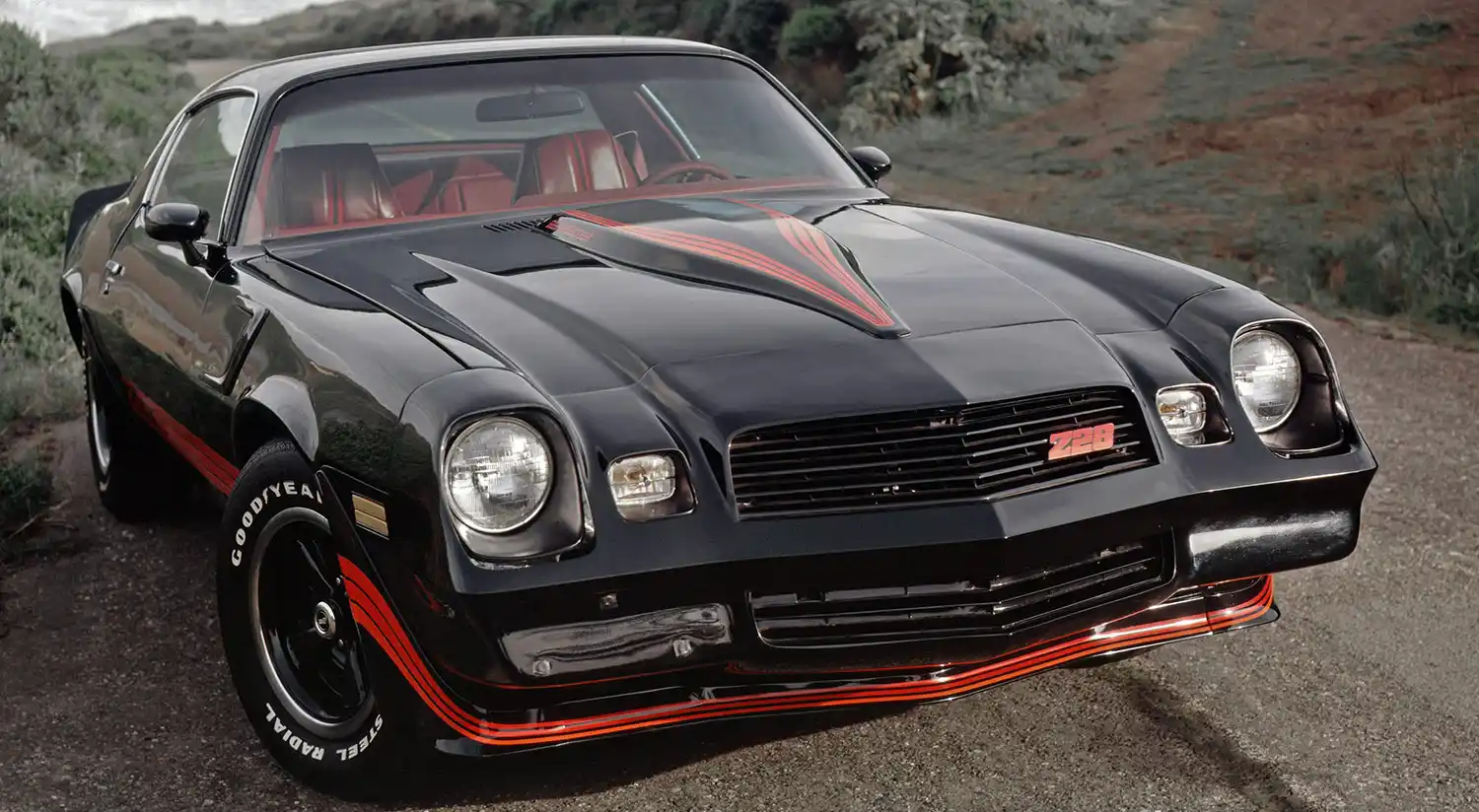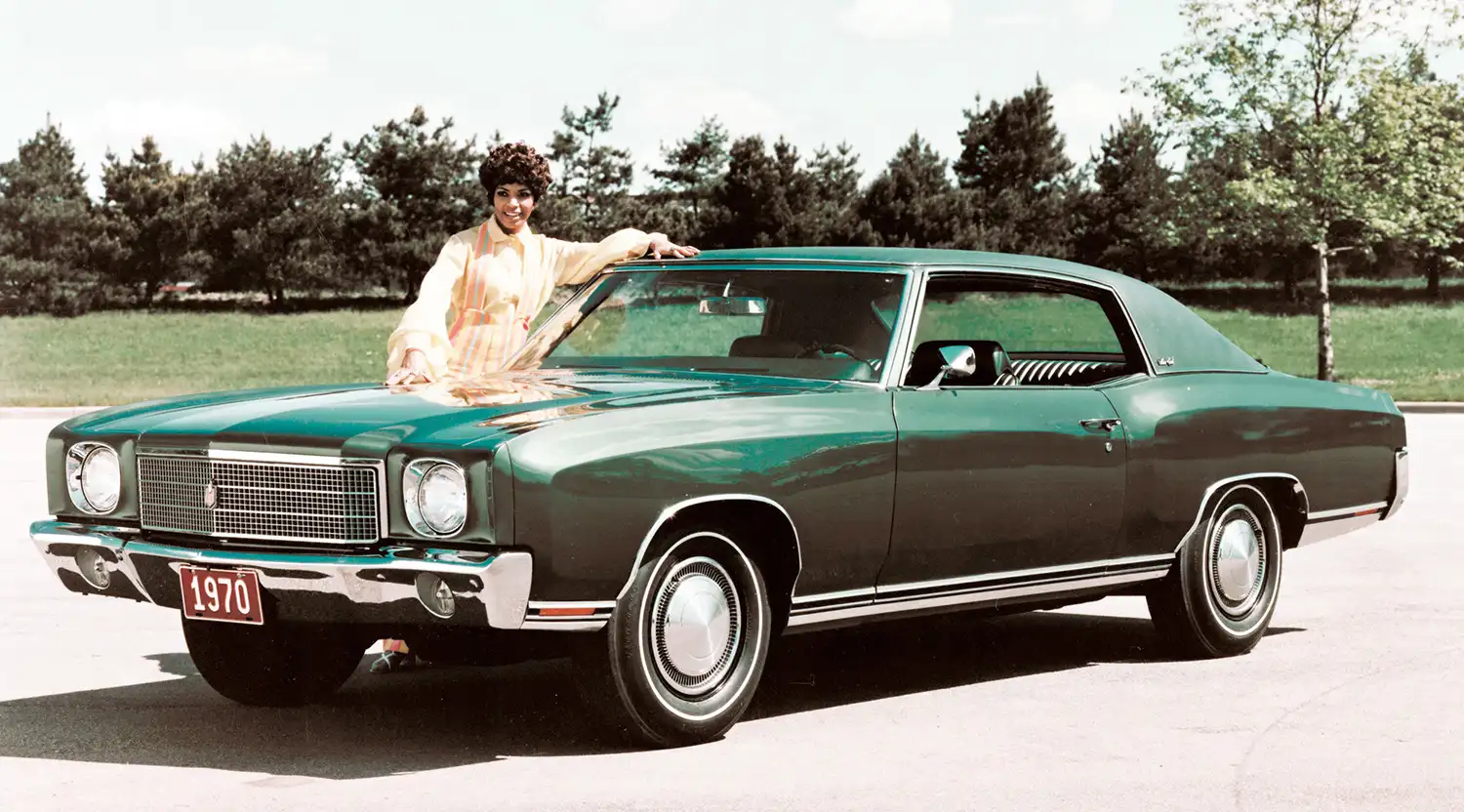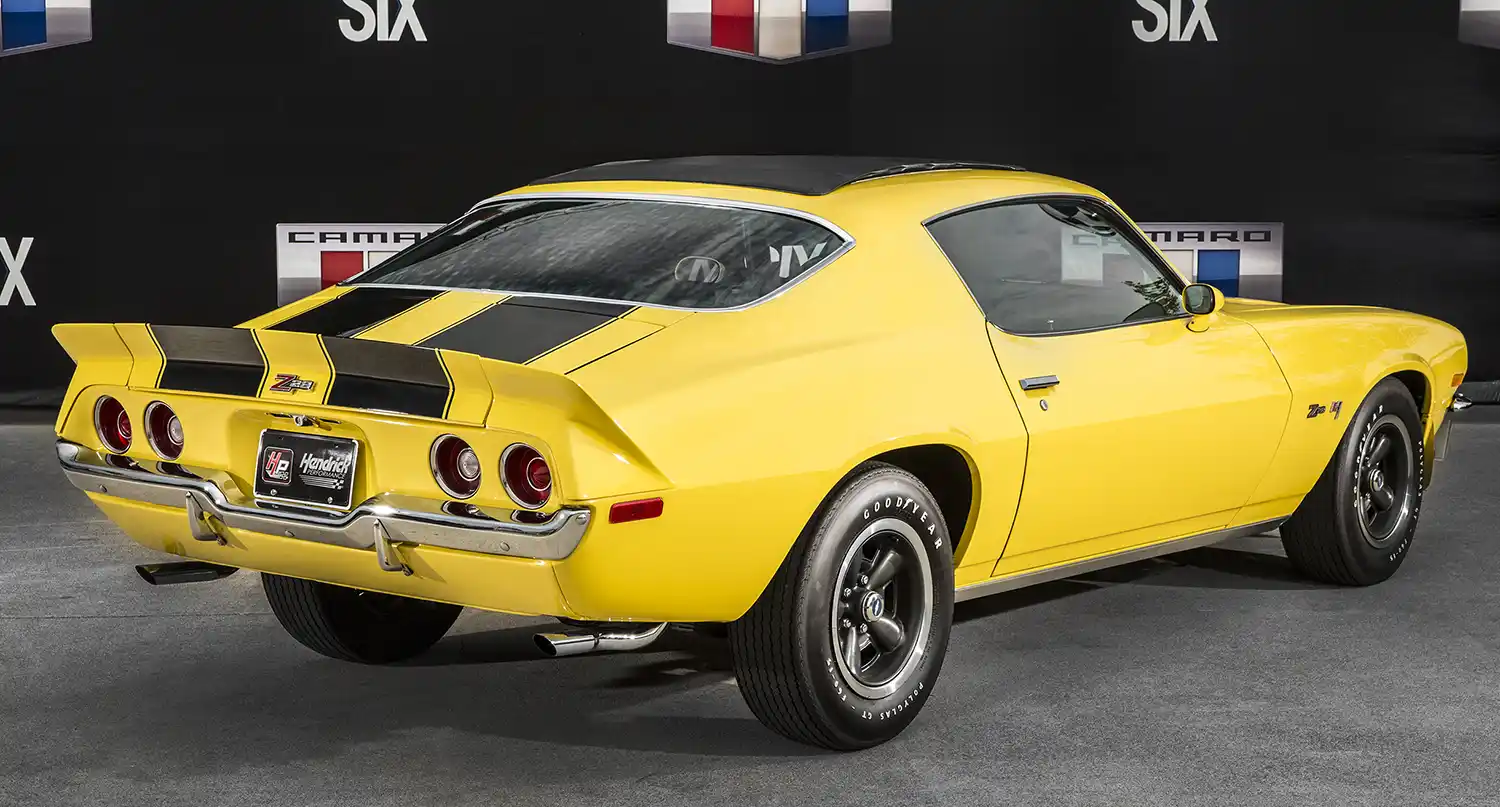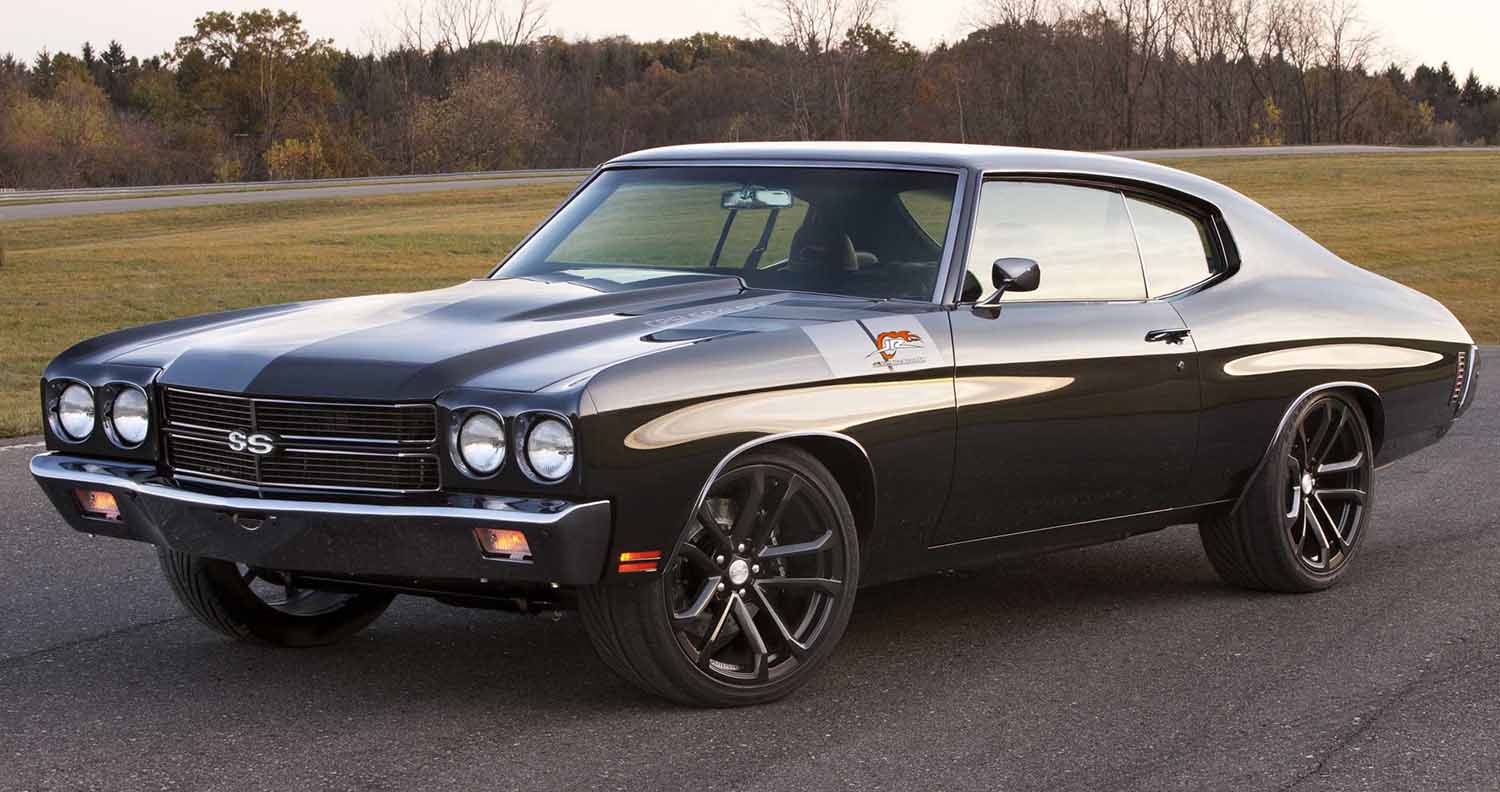
The Chevrolet Chevelle is a mid-sized automobile which was produced by Chevrolet in three generations for the 1964 through 1978 model years. Part of the General Motors (GM) A-body platform, the Chevelle was one of Chevrolet’s most successful nameplates.
Body styles include coupes, sedans, convertibles, and station wagons. Super Sport versions were produced through the 1973 model year, and Lagunas from 1973 through 1976. After a four-year absence, the El Camino was reintroduced as part of the new Chevelle lineup in 1964.

The G-body Monte Carlo, introduced in 1970, also used a platform that was based heavily on the Chevelle platform, although it was lengthened ahead of the firewall. The Malibu, the top of the line model through 1972, completely replaced the Chevelle nameplate for the redesigned, downsized 1978 model year.
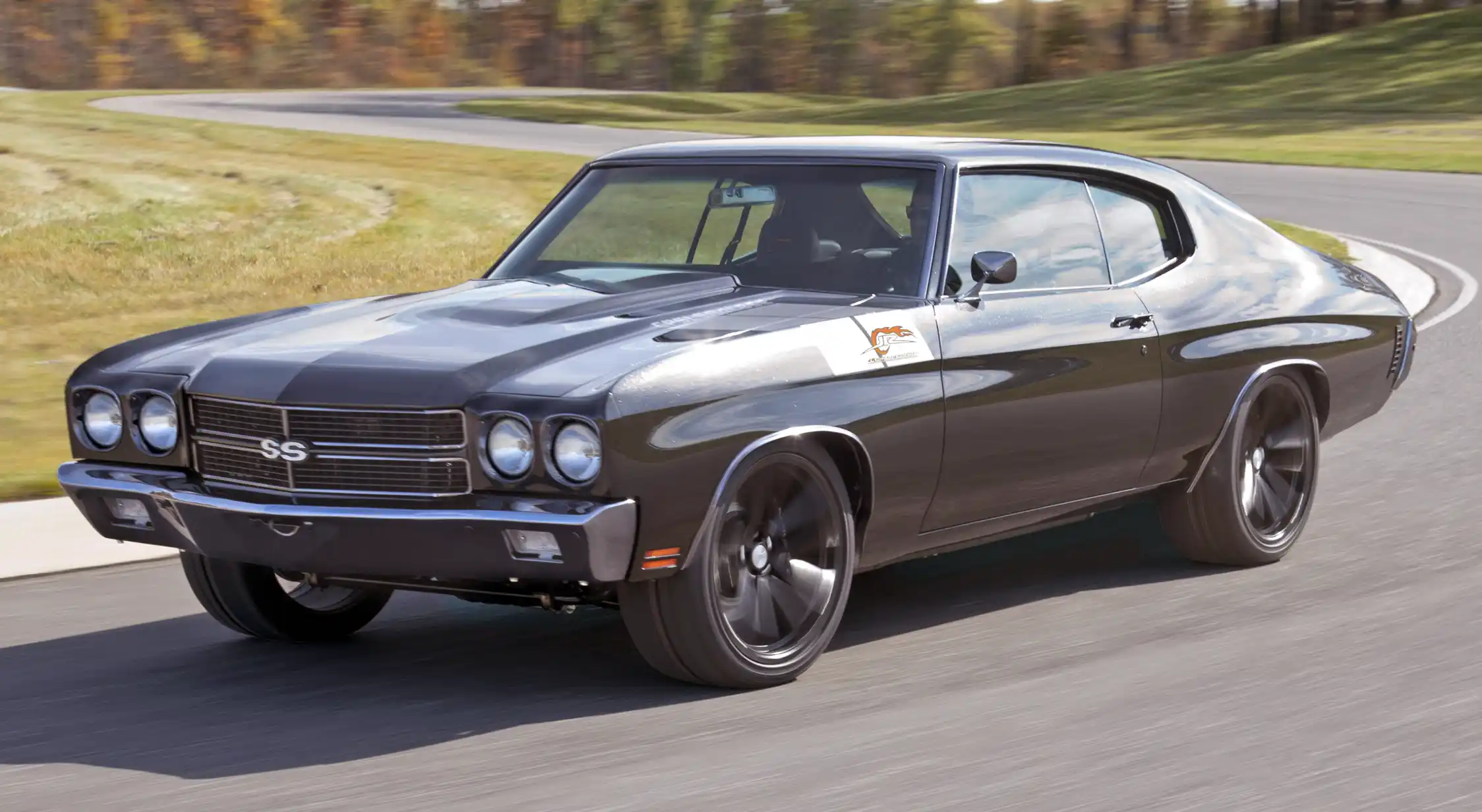
At its prime, the Chevelle SS had 450 horsepower and could run the quarter mile in the low 12 second range. Then the gas crisis hit and the muscle car era was over.
The line between pony cars and muscle cars is not the clearest one. But even if it is sometimes difficult to see these days, American automakers genuinely did used to try to make a distinction between pony cars and muscle cars. Muscle cars were usually bigger and more expensive, and weren’t quite so deliberately aimed at young people.

The distinction is easiest to make when talking about a car made by a manufacturer which also had a pony car in the lineup, and thus the Chevrolet Chevelle SS is a good starting point. Another big difference between muscle and pony cars is that a pony car is still considered a pony car even in its base trim, whereas muscle cars are usually based on mainstream models and are only considered muscle cars when in performance trim. Thus we have the Chevelle SS, based on one of Chevy’s most successful nameplates in history, yet certainly distinct from the station wagons which also wore the Chevelle badge.
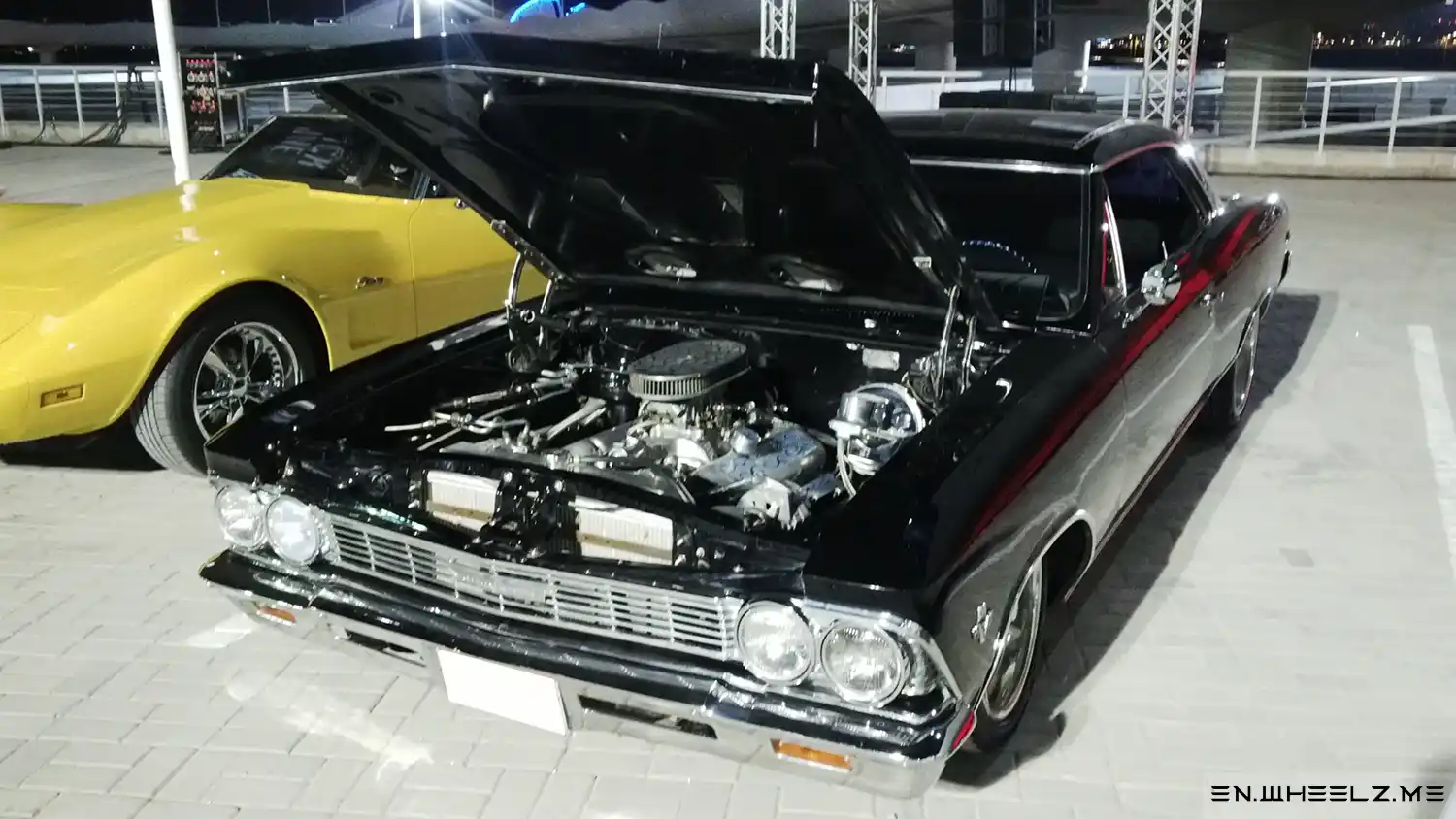
The Chevelle was first introduced in 1964, and a Super Sport package was available right from the start. Confusingly, the top trim level of the Chevelle was known as the Malibu, a nameplate which would eventually evolve to replace the Chevelle entirely.
The SS package was only available for Malibu models, and SS models would be badged “Malibu SS” for the first couple years of production. The Malibu name would still be applied internally, but the badge on the car disappeared after 1965. This was just one of many changes which happened very rapidly to the SS as the muscle car segment took off like a shot in the mid-sixties.
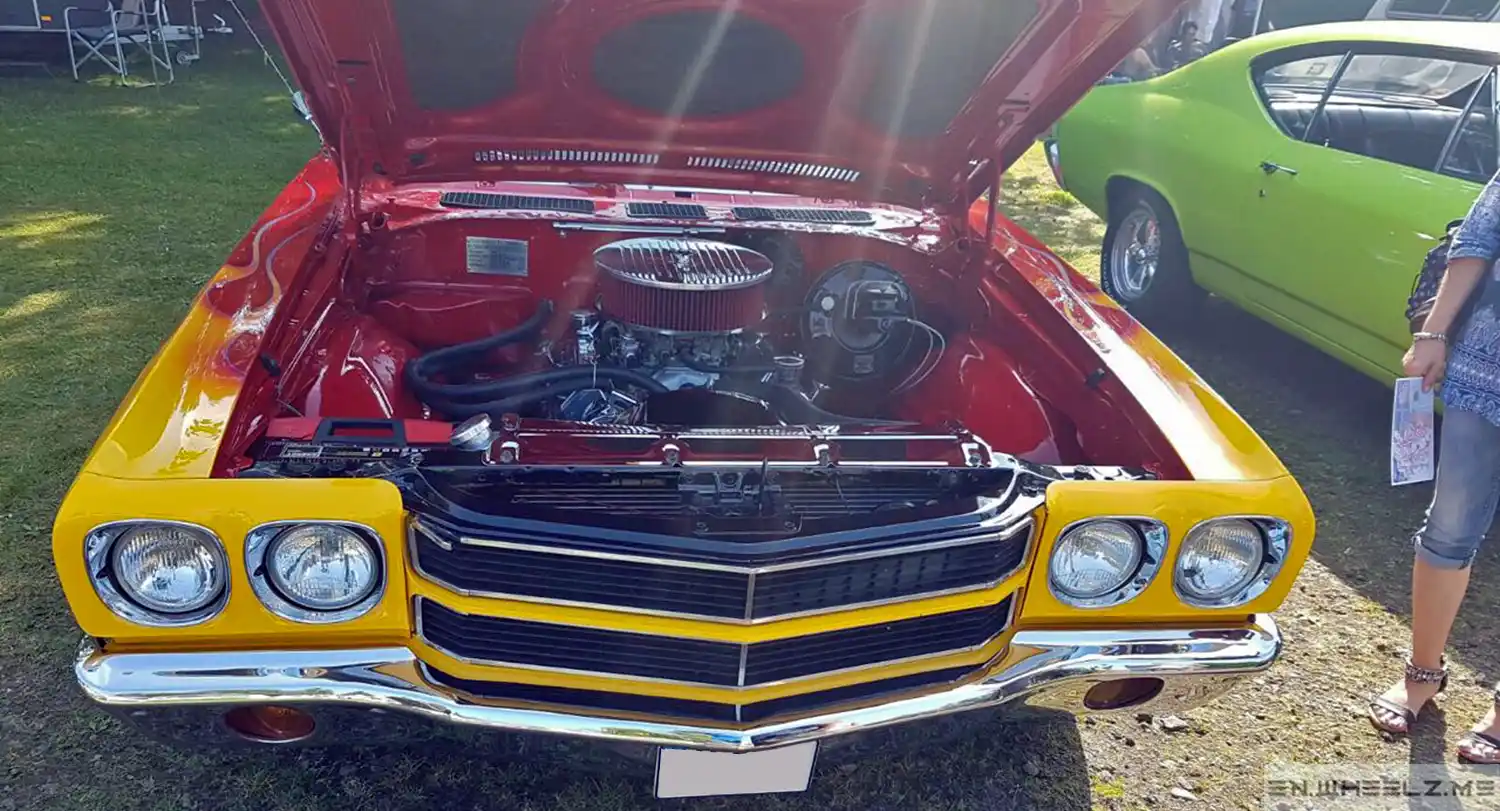
But Chevelle SS sales never faltered, actually increasing to 86,000 in 1969. The big game changer came in 1970, when Chevy started offering the 454cu-in V8. This was available in two states of tune, one producing 360 horsepower and one producing 450 horsepower (at least, that’s the official figure, third-party dyno tests have shown it to be about 470 horsepower).
These 454-equipped cars could run the quarter mile in the very low twelves completely stock, and represent the pinnacle of Chevelle SS performance. A less-sporty body style debuted in 1973, and SS sales dropped right off, causing Chevy to drop the option at the end of the model year.
The muscle car era reached its peak in 1970, as Chevelle SS power climbed to record highs. With the optional 450-hp, LS-6 454 big-block V-8 engine, it could top 100 mph in 13.3 seconds.
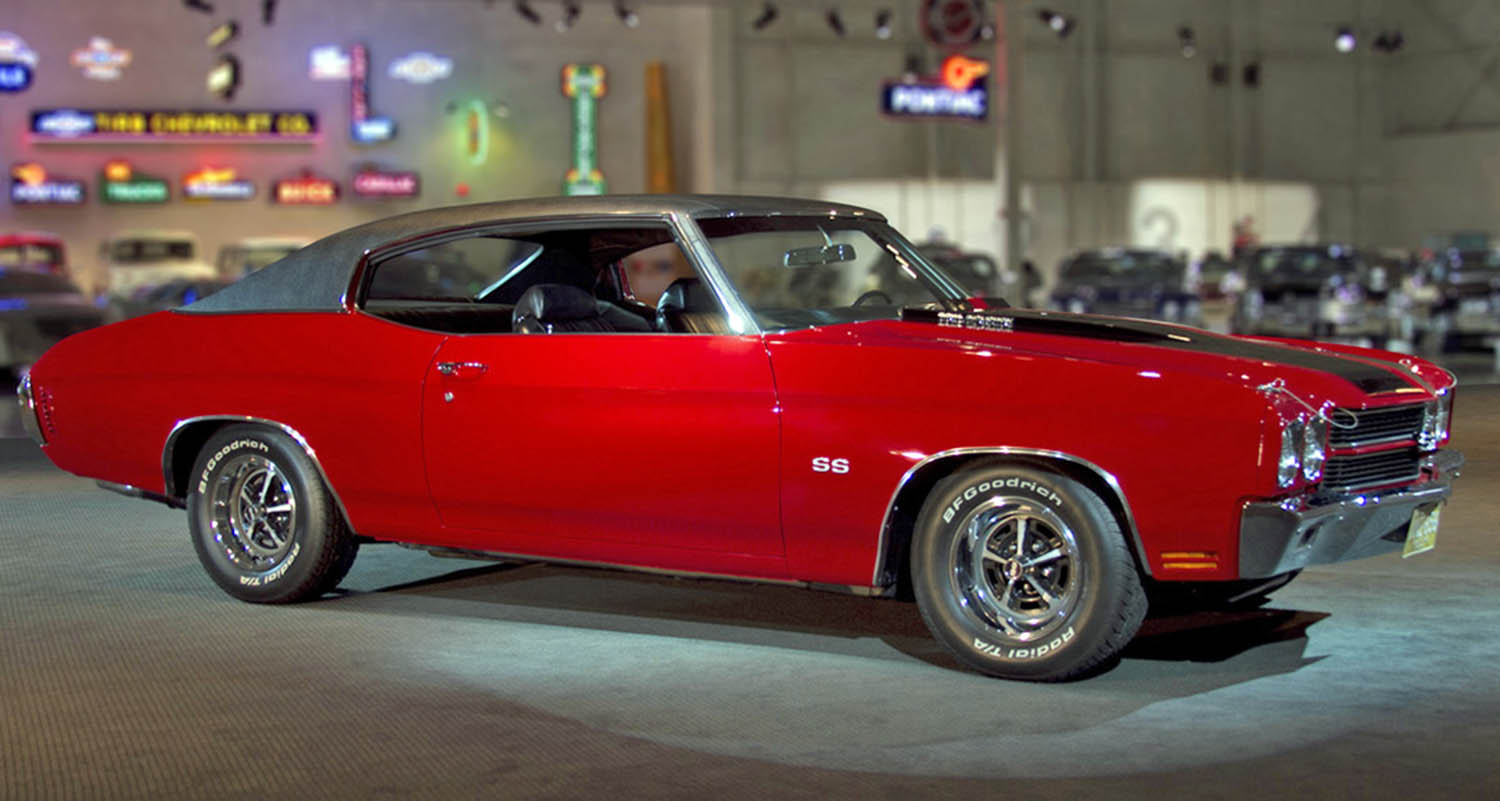
1970 Chevrolet Chevelle SS LS7
By 1970, the Muscle Car era was at its peak, and no muscle car soared higher than the Chevrolet Chevelle SS. With the base 350 cid V8 engine and optional 396 cid big block having been offered in earlier models, the 1970 Chevelle SS benefitted from a change in GM corporate policy that would now allow the Divisions to install engines larger than 400 cid in their mid-sized cars.
The rarest of all 1970 Chevelle SS’s were powered by the mighty 454 cid big block V8.
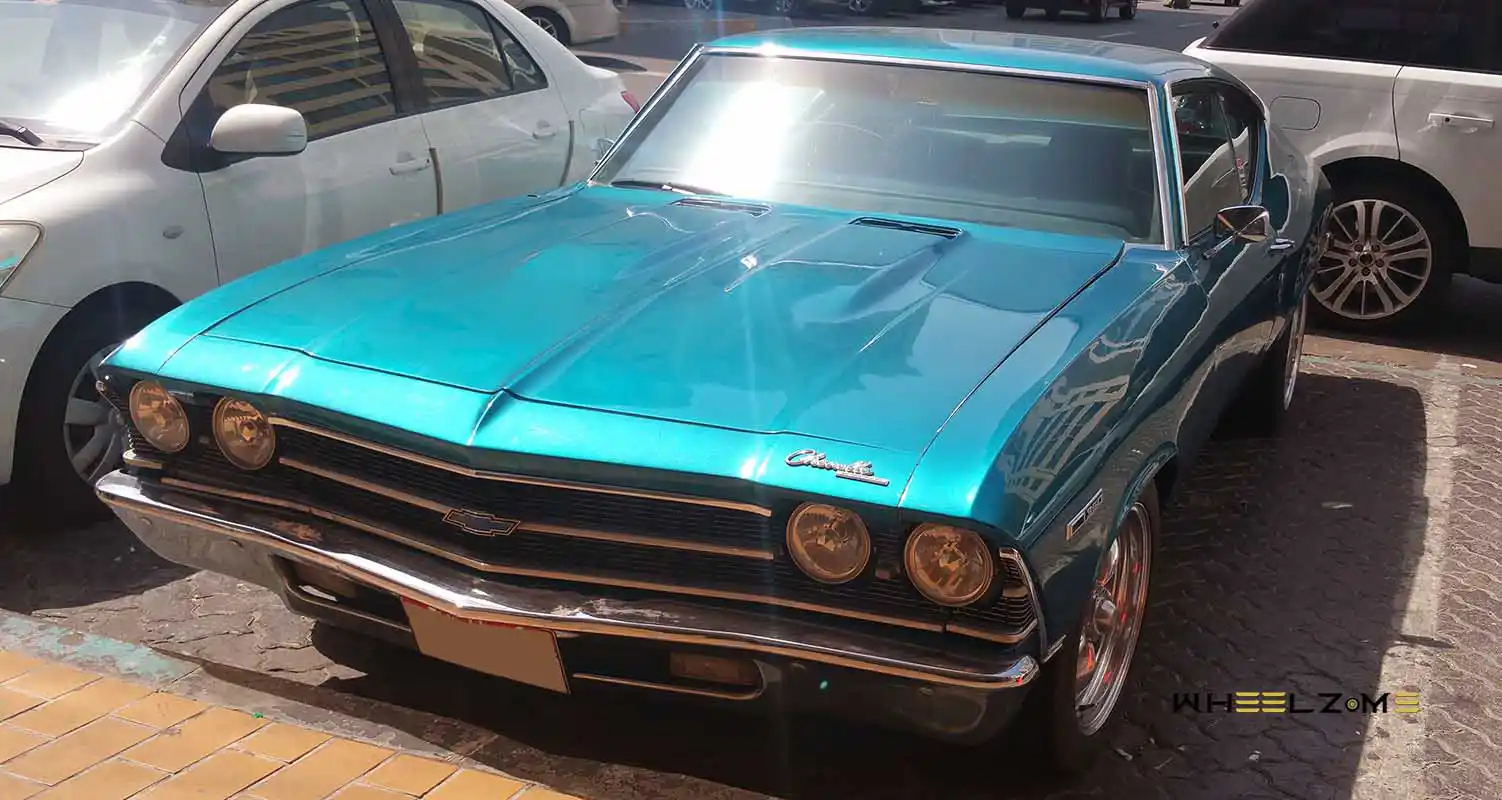
This car, originally built as a 396, is very special since it has been re-powered by the LS7, 427 cid small block V8 that is found in the 2007 Z06 Corvette. This engine provides the basis for the Le Mans Championship winning Corvettes that have swept to victory in the 24 hour French classic.
- Wheelbase: 112.0 in (284.48 cm)
- Weight: 3307.00 lbs (1,500.03 kg)
- Engine: 427 cid, ohv V8 (LS7), 505 hp @ 5,500 rpm
- Base Price: $3,305.00
1970 Chevrolet Chevelle SS
The era of the muscle car was ending anyway, and even if sales had kept up, the SS wouldn’t have lasted much longer. The Camaro might be the better-remembered car of the era, not to mention the nameplate which has survived, but the muscle car genre would not have been the same without the Chevelle SS.
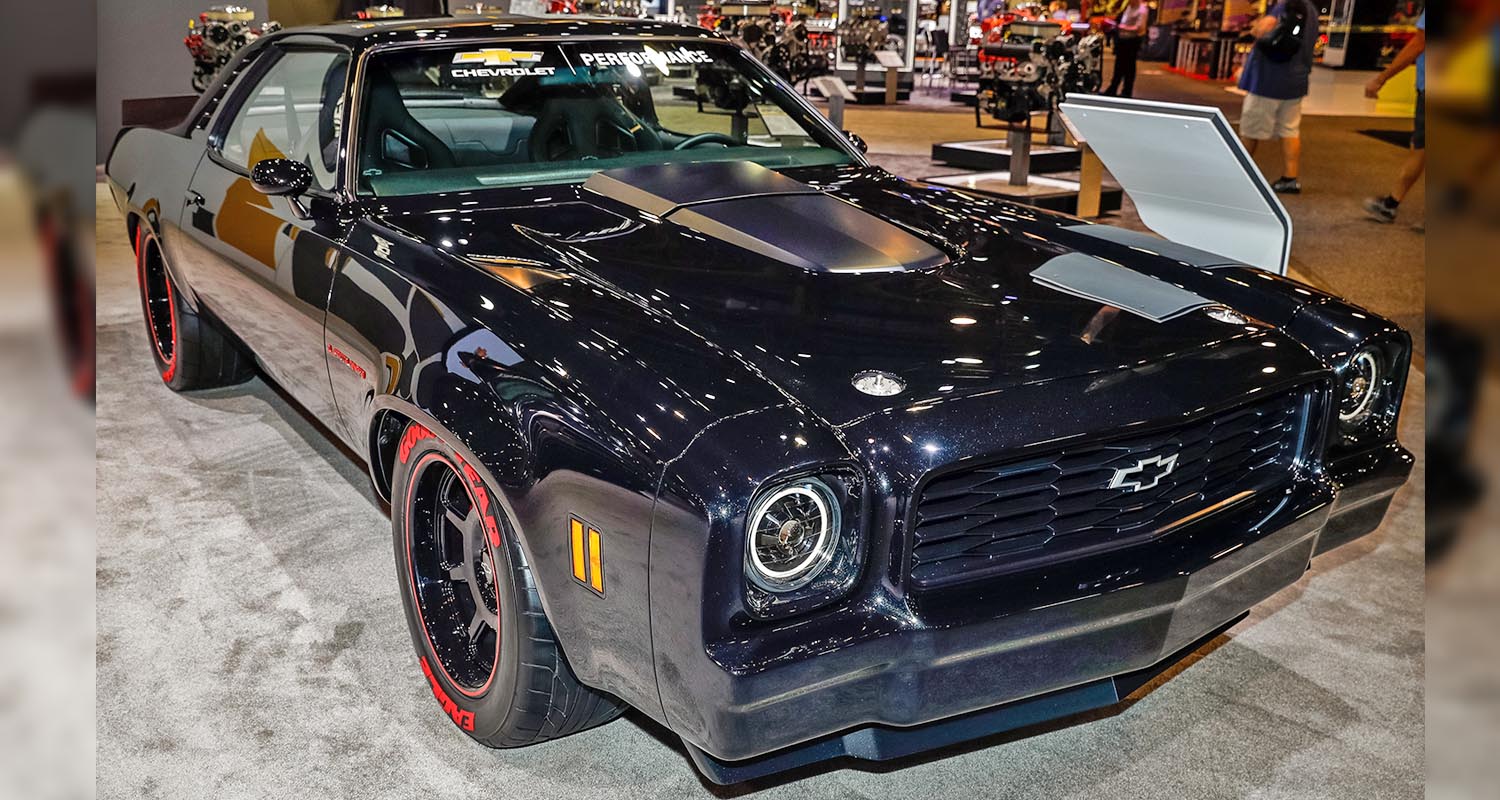
1970 Chevrolet El Camino SS
Based on the midsize Chevy Chevelle — and fully sharing in that car line’s multitudinous power options — the 1970 El Camino SS pickup combined pickup utility with muscle car looks and power.
Chevrolet’s racing-inspired 1973 Chevelle Laguna SEMA show car (2018)
Chevrolet’s racing-inspired 1973 Chevelle Laguna SEMA show car showcases the new LT5 crate engine, which is rated at 755 hp and 715 lb.-ft. of torque.
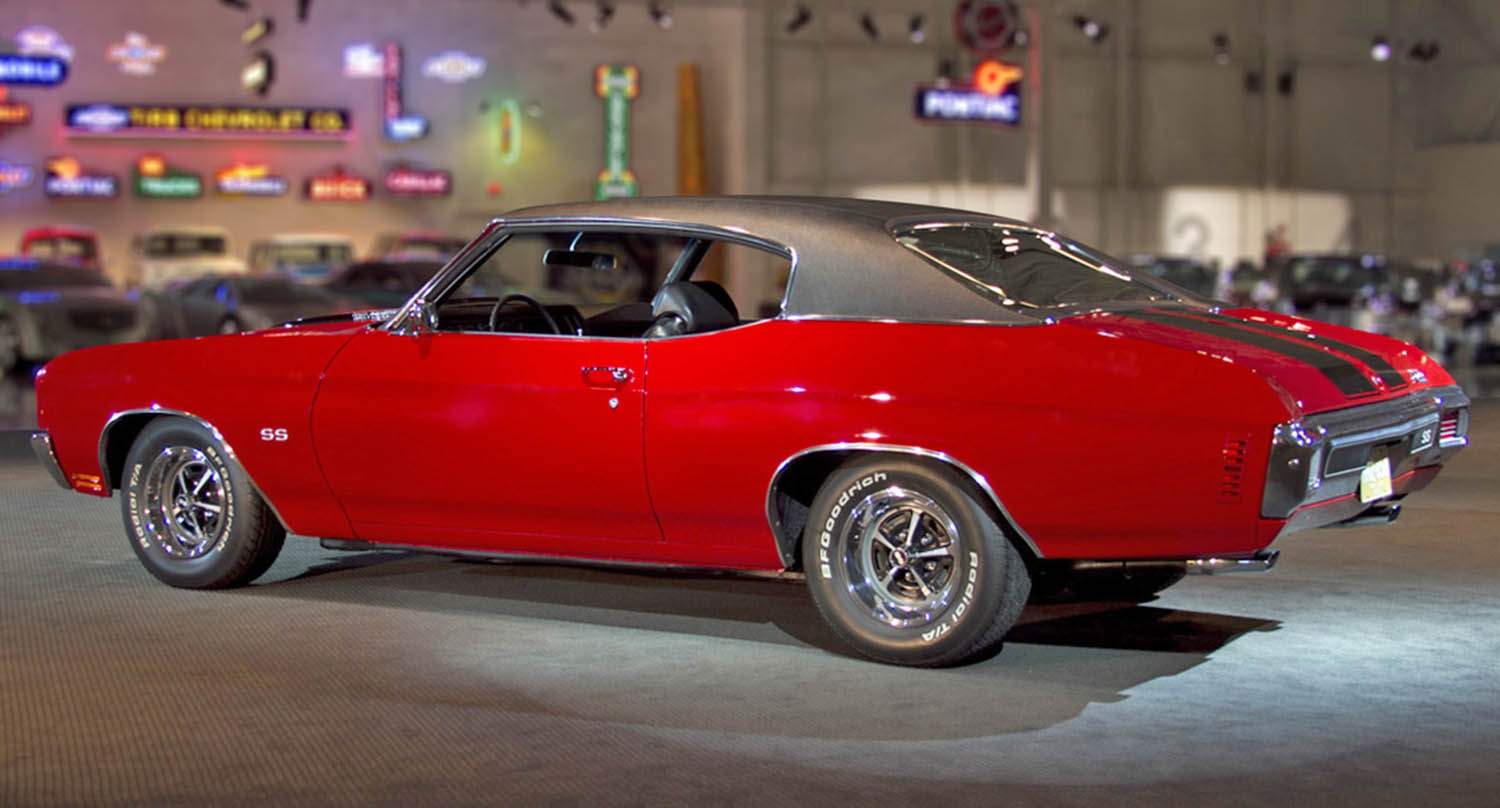
1973 Chevelle Laguna / LT5 6.2L Supercharged
The Chevelle Laguna introduced sporty, more contemporary styling to the Chevrolet lineup in 1973, with distinctive, body-color urethane front and rear fascias. It also made its mark in NASCAR, powering drivers such as Cale Yarborough to the winner’s circle.
That racing heritage inspired the build of this show car, which features the new LT5 6.2L supercharged crate engine. It’s based on the engine that drives that Corvette ZR1 and is the most powerful production engine ever from Chevrolet, rated at 755 horsepower and 715 lb.-ft. of torque. It’s also a technology powerhouse, with Chevy’s first dual-fuel system, featuring direct injection and supplementary port injection, as well as a new, larger-displacement supercharger to boost the engine’s air charge.
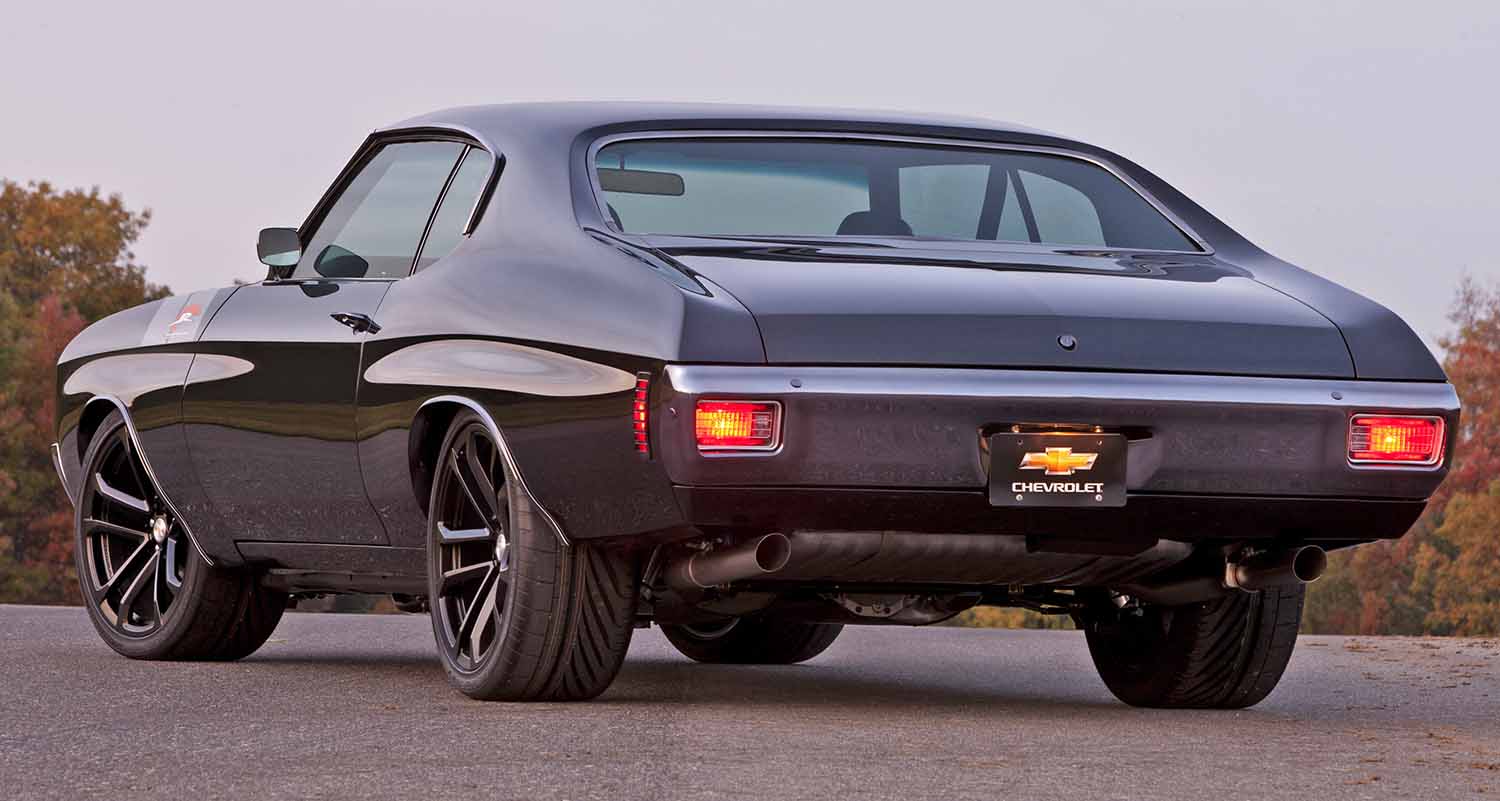
Chevrolet designers adapted the production ZR1’s carbon fiber hood styling on the Laguna, in a nod to the propulsion system, along with front and rear spoilers that pay homage to the NASCAR racecars of the Seventies. The car rides on a modified suspension and 18-inch wheels.
Chevrolet’s Chevelle Slammer concept (2017)
Chevrolet’s Chevelle Slammer concept combines hot rod style with modern performance and technology, with the all-new LT376/535 crate engine, controllers and SuperMatic 4L75-E automatic transmission.
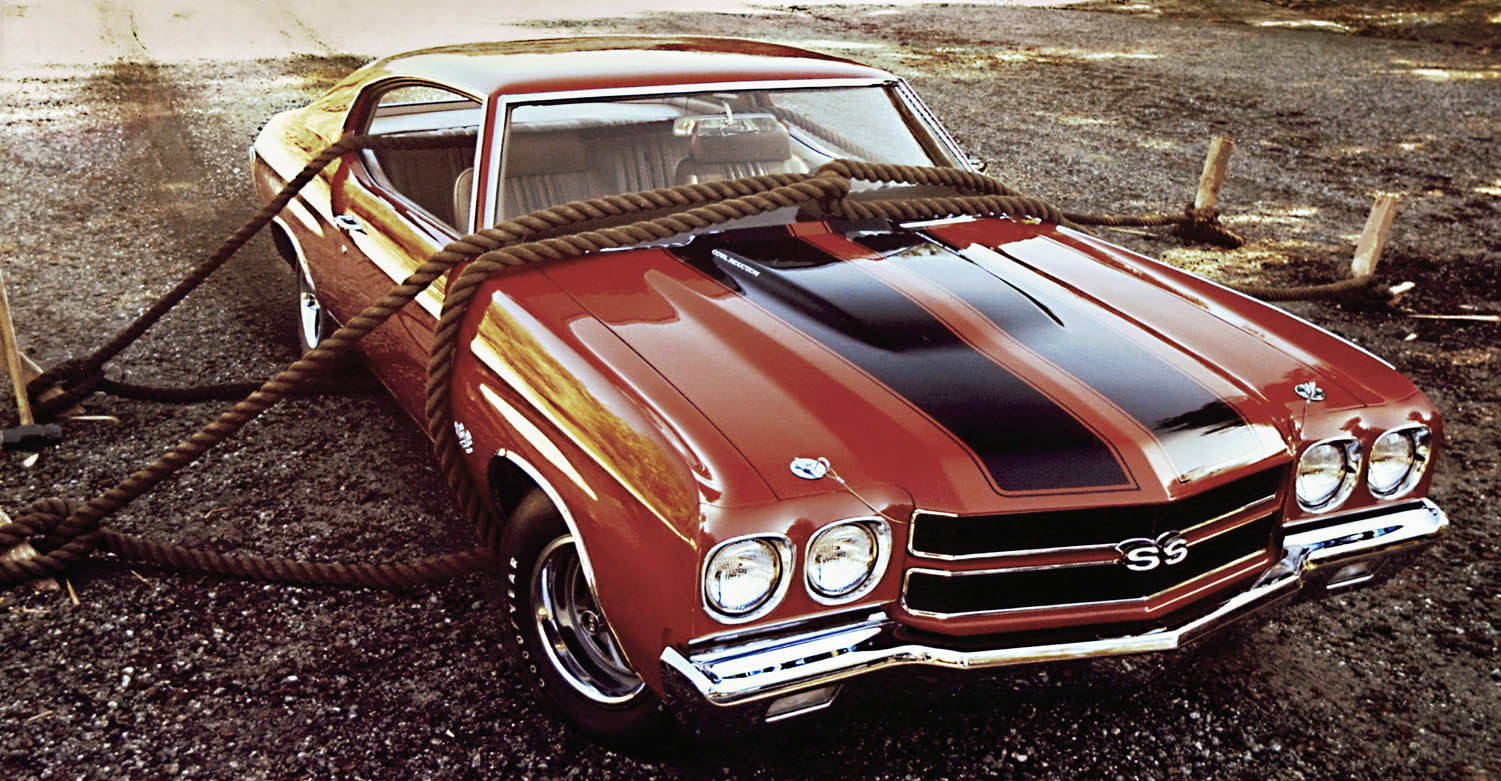
Malibu through the years
Named after the California city famous for its beaches, the 1964 Chevrolet Malibu was the top-line model of an all-new vehicle line touted as a premium choice for families that needed space and efficiency for long commutes.
Chevrolet said the Malibu was an “intermediate” – a car positioned between the full-size series and the compact Chevy II, and representing the birth of the mainstream midsize segment. Customers found it just the right size, snapping up more than 370,000 in the first year from a lineup that also included the entry-level 300 and Chevelle models, and a range of body styles that included coupes, sedans, wagons and convertibles. The lineup also included the Malibu SS muscle car.
Sources:
Wikipedia
impex.com.lb
Chevrolet
gmheritagecenter

